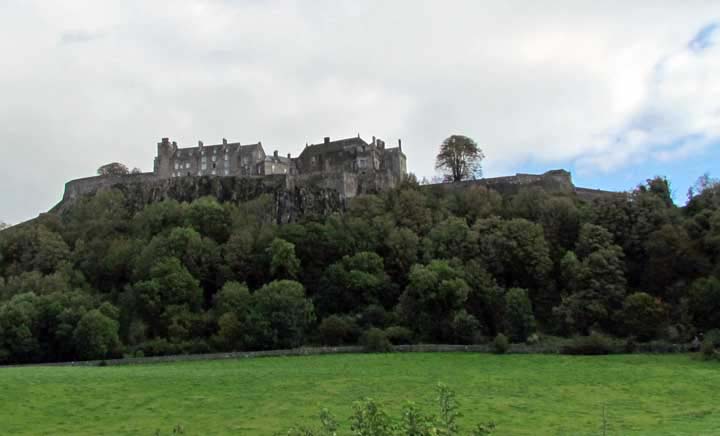
Stirling Castle

Stirling Castle, located in Stirling, is one of the largest and most important castles, both historically and architecturally, in Scotland. The castle sits atop Castle Hill, an intrusive crag, which forms part of the Stirling Sill geological formation. It is surrounded on three sides by steep cliffs, giving it a strong defensive position. Its strategic location, guarding what was, until the 1890s, the farthest downstream crossing of the river Forth, has made it an important fortification from the earliest times.
Views from the parking lot!
Couldn't wait to go inside.
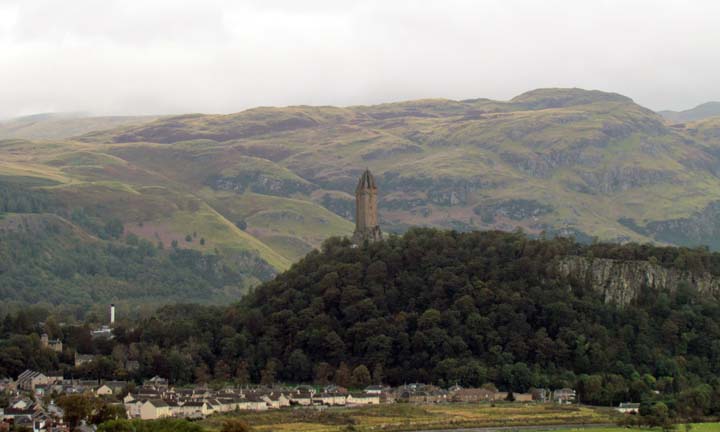
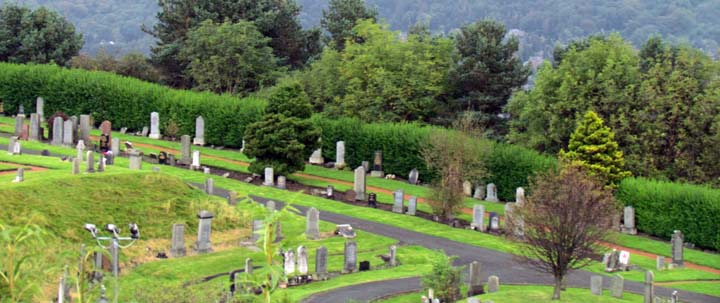
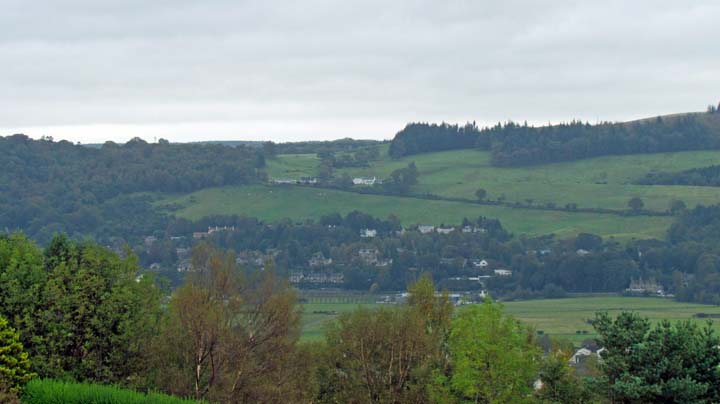
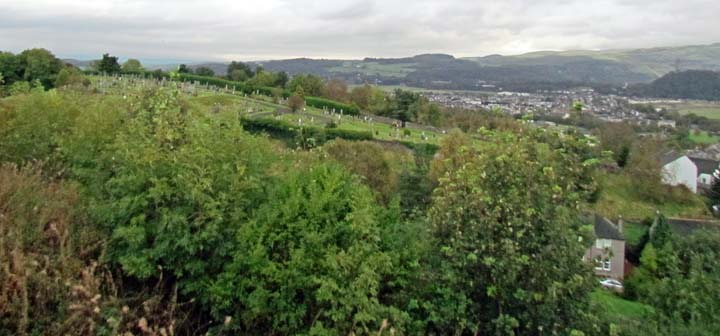
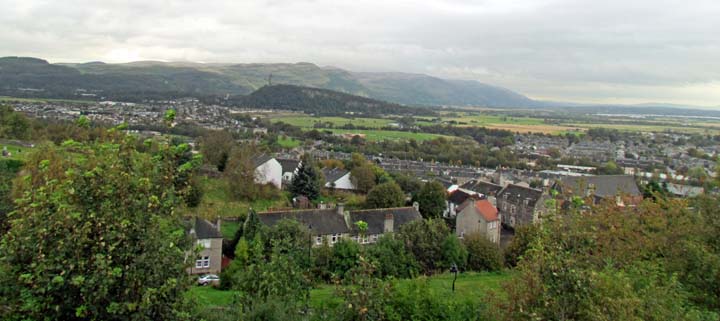
Most of the
principal buildings of the castle date from the fifteenth and sixteenth
centuries. A few structures of the fourteenth century remain, while the outer
defenses fronting the town date from the early eighteenth century. Several Scottish
Kings and queens have been crowned at Stirling, including Mary, Queen of Scots, in 1543. There have been at least eight
sieges of Stirling Castle, including several during the Wars of Scottish Independence, with the last being in 1746, when
Bonnie Price Charles unsuccessfully tried to take the castle. Stirling Castle
is managed by Historic Scotland.
The imposing location upon the cliff
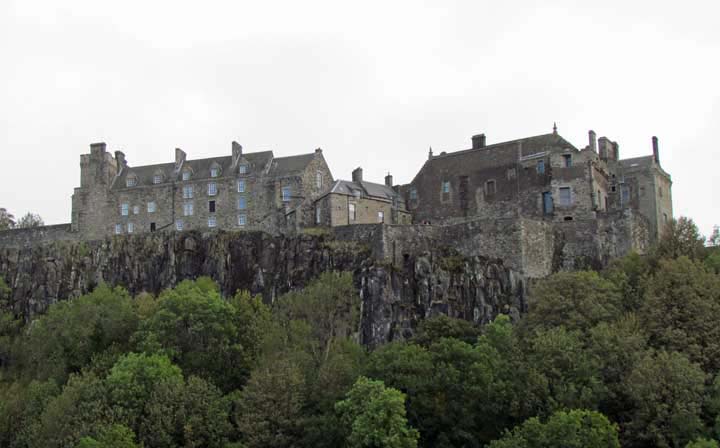
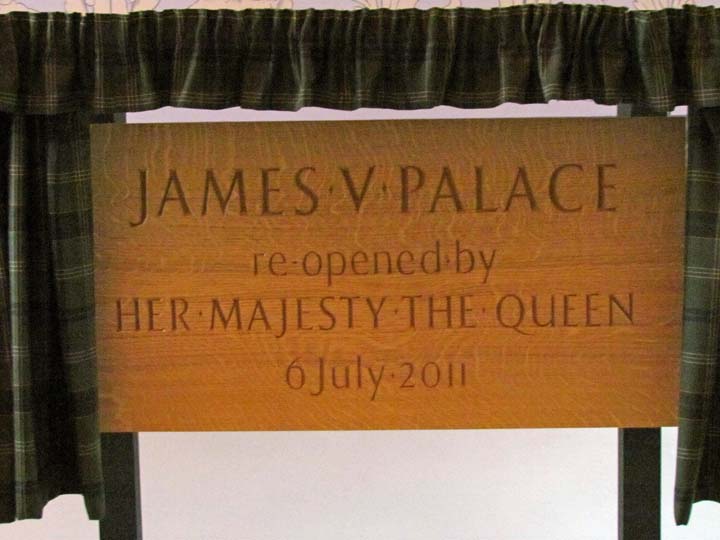
legends have been associated with Stirling, or "Snowdoun"
as it was more poetically known. The 16th-century historian Hector Boece claims in his Historia Gentis Scotorum that the
Romans, under Agricola,
fortified Stirling,
and that Kenneth MacAlpin, traditionally the first King of Scotland, besieged a
castle at Stirling during his takeover of the Pictish kingdom in the 9th
century. Boece is, however, considered an unreliable historian.
Another chronicler, William Worcester,
associated Stirling with the court of the legendary King Arthur.
Tradition suggests that St Monenna founded a chapel here, as she is said to have
done at Edinburgh,
although it is now thought that the legend of Monenna results from a later
confusion of early Christian figures, including Modwenna and Moninne.
The first record of Stirling Castle dates from around 1110, when King Alexander I dedicated a chapel here. It appears to have been an established royal centre by this time, as Alexander died here in 1124. During the reign of his successor David I, Stirling became a royal burgh, and the castle an important administration centre.
King William I formed a deer
park to the south-west of the castle, but after his capture by
the English in 1174 he was forced to surrender several castles, including
Stirling and Edinburgh,
under the of Treaty Falaise. There is no evidence that the English actually occupied
the castle, and it was formally handed back by Richard I of England in 1189. Stirling continued to be a
favored royal
residence, with William himself dying there in 1214,
and Alexander III laying out the New Park, for deer hunting, in the 1260s.
Queen Mary returned to Scotland in 1561, and visited
Stirling Castle frequently. She nursed Henry
Stewart, Lord Darnley, through an illness here in 1565, and the two were soon
married. Their son, James VI, was baptized here the following year. The celebrations
included fireworks, an assault on a mock castle, and a masque
designed by Bastian Pagez. Darnley was already estranged from the Queen and did not
attend although he was resident at the castle. James' guardian, the Earl of Mar, was made hereditary governor of the castle in 1566. Mary
was traveling from Stirling when she was abducted by the Earl of Rothwell,
beginning the chain of events that led to her forced abdication and her flight
to England.
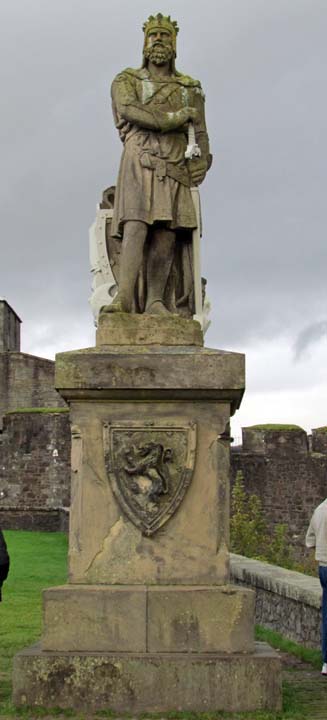
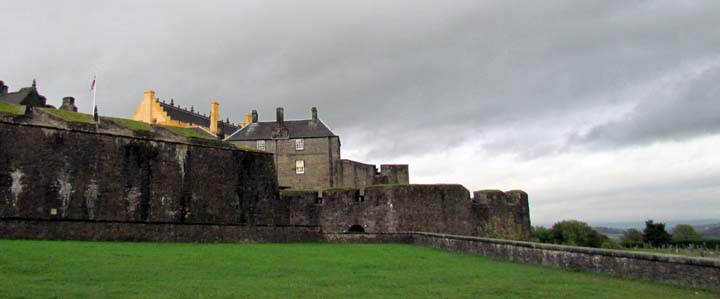
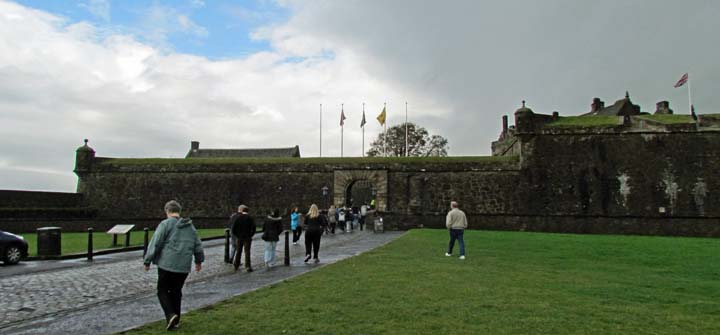
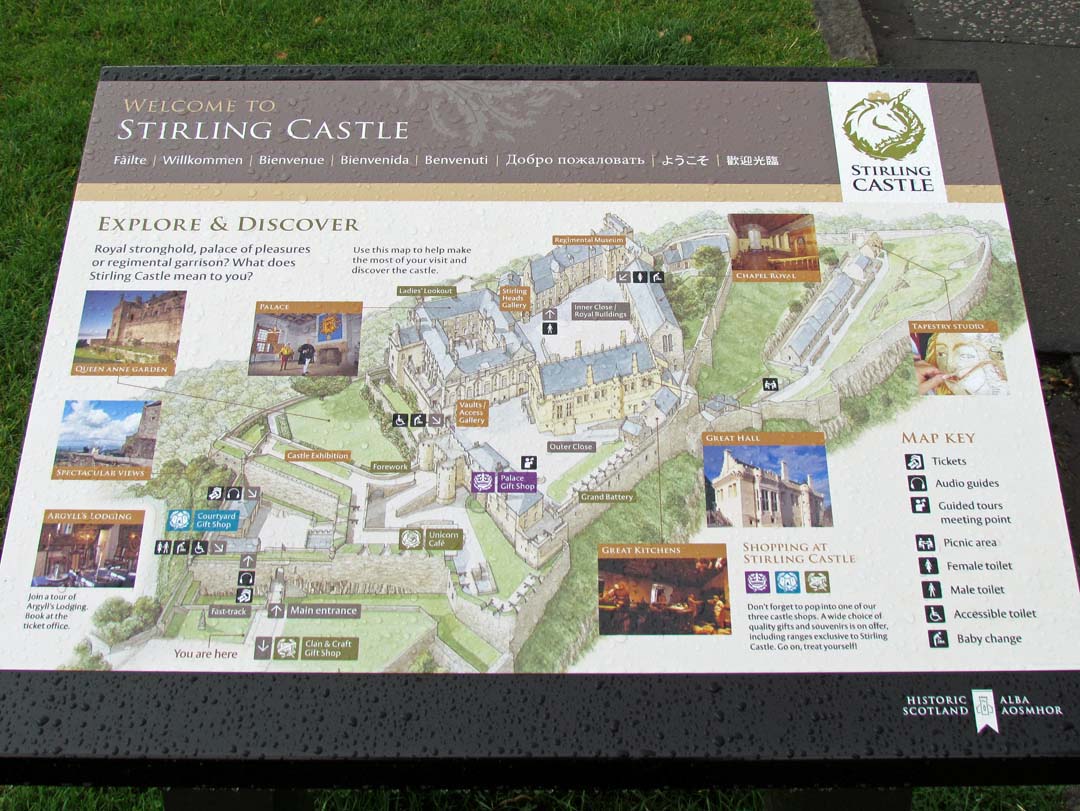
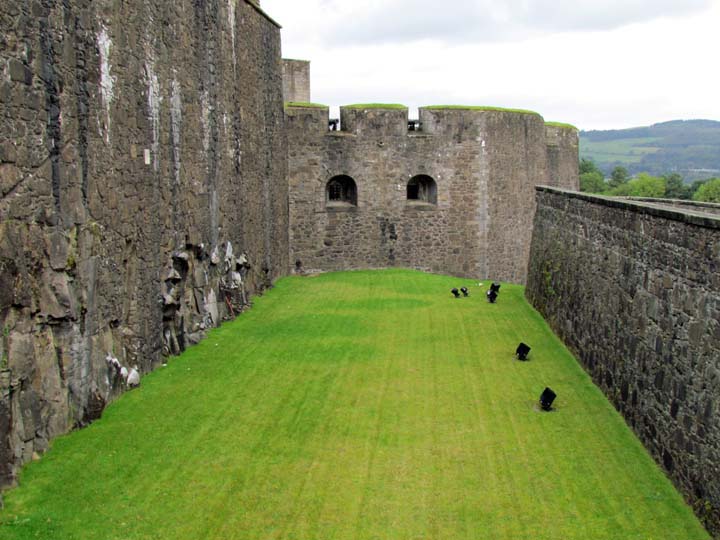
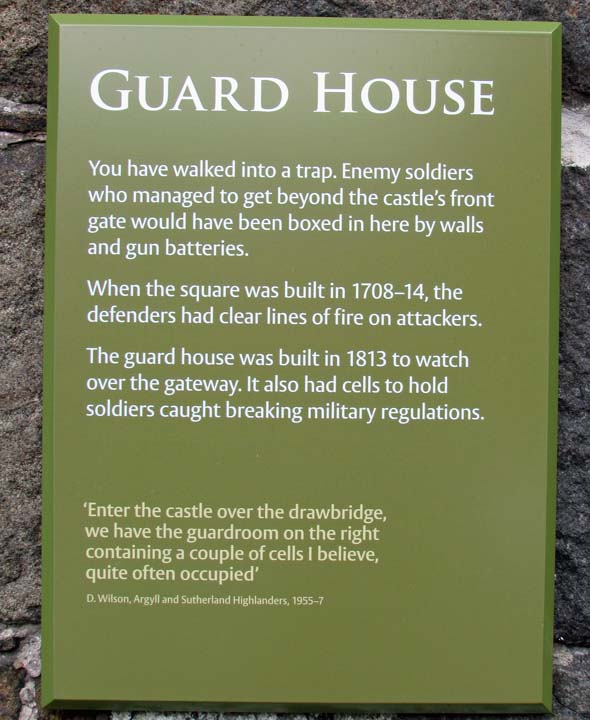
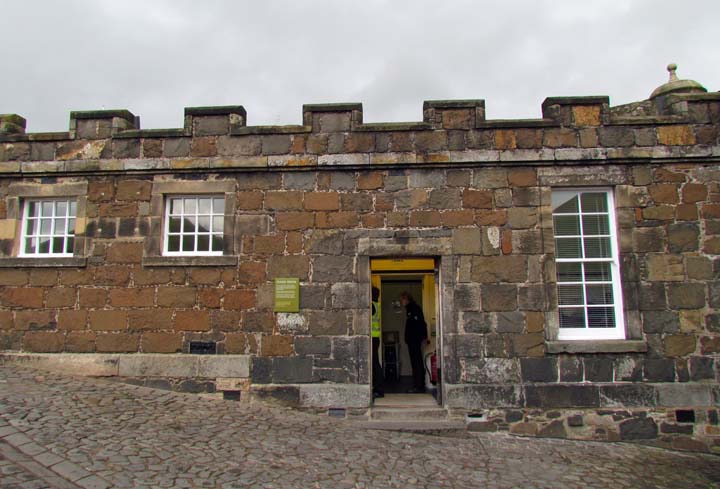
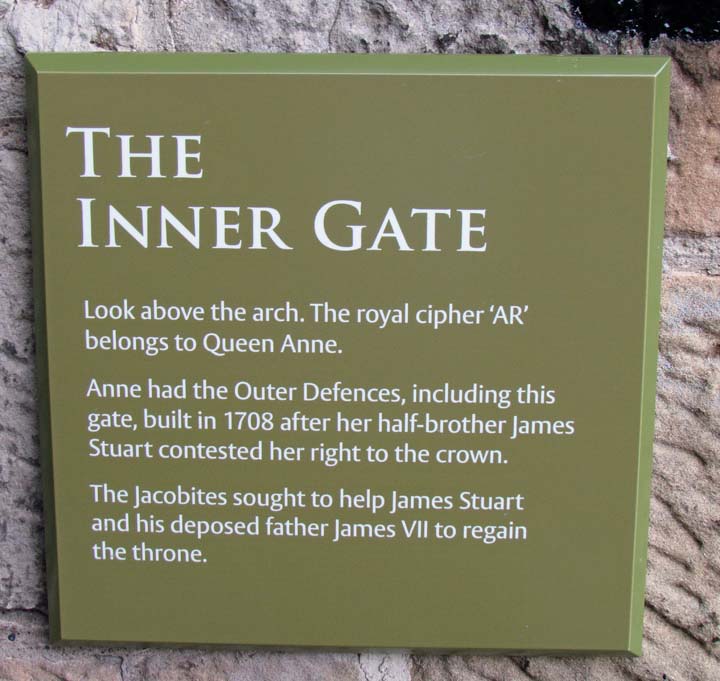
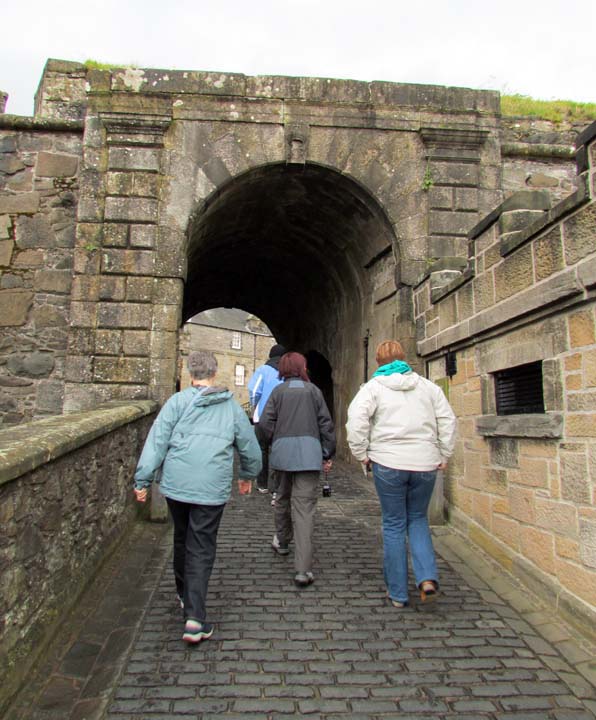
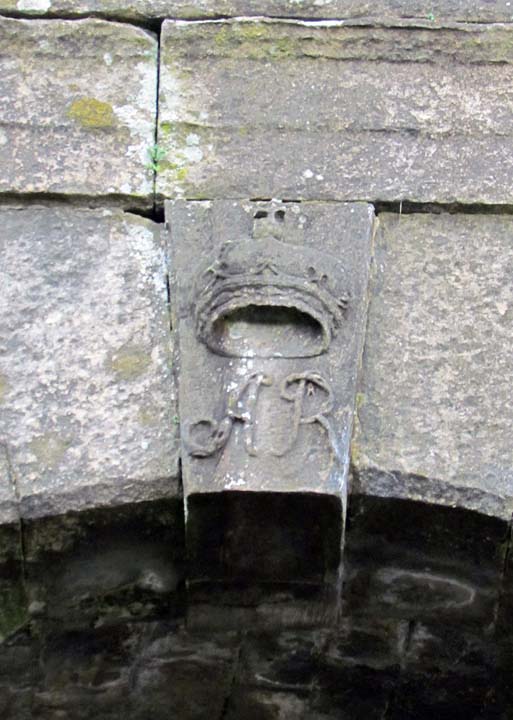
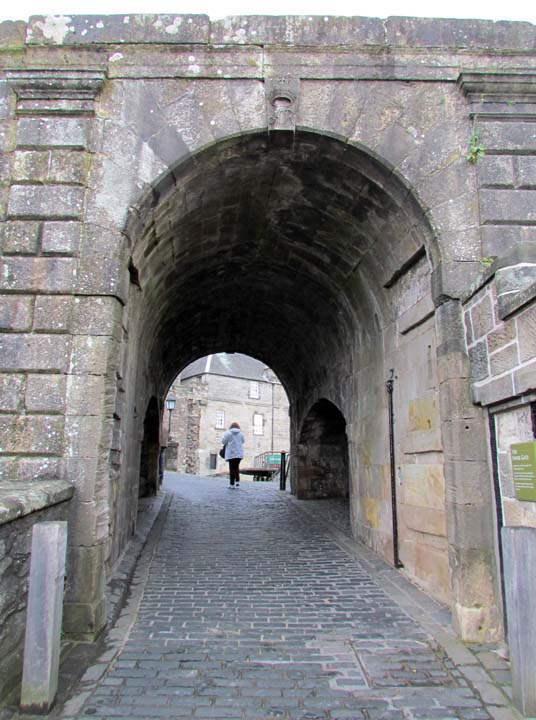
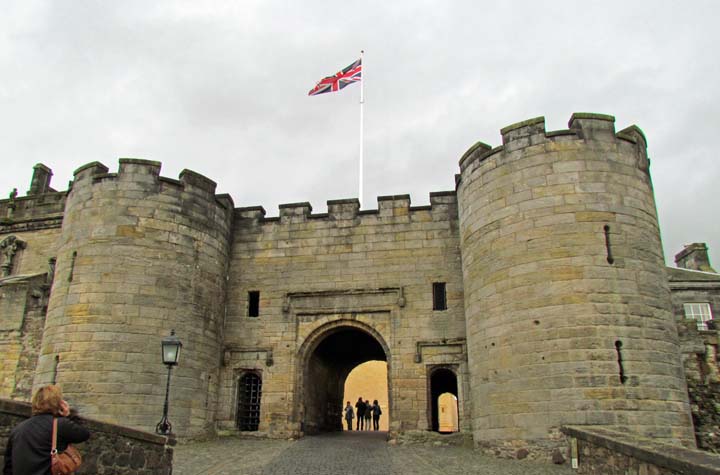
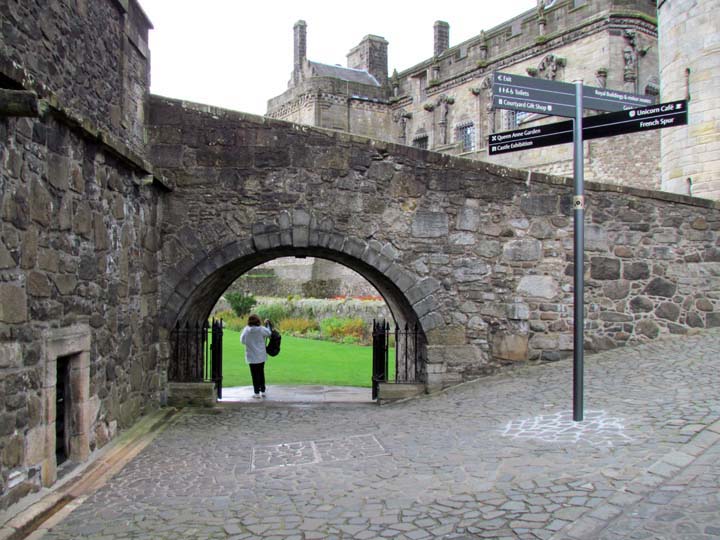
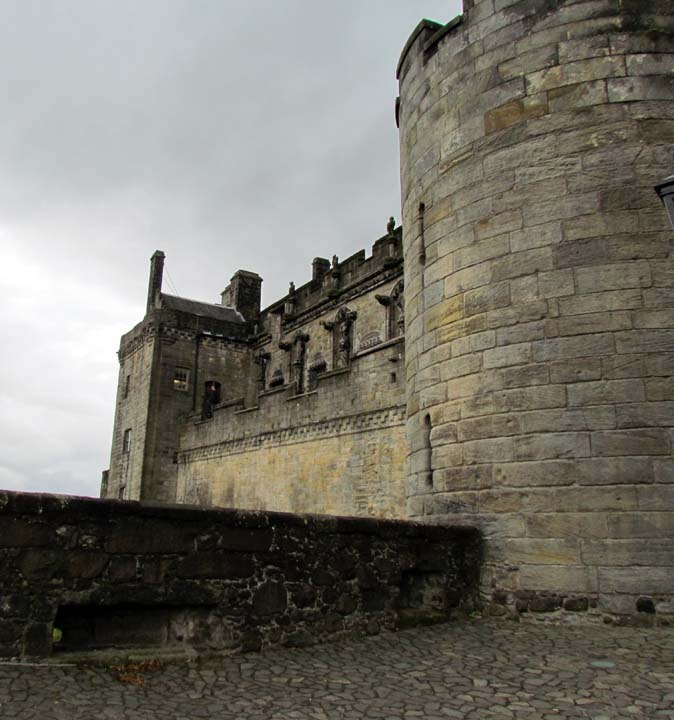
The "yellow" building seen below is the color ALL of the castle was pained when in use
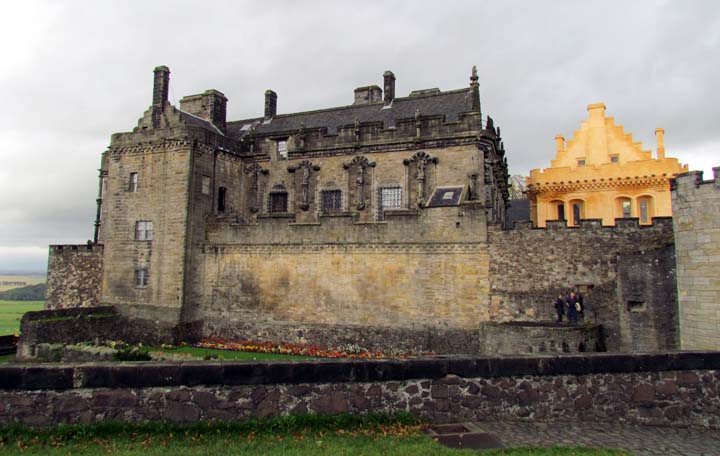
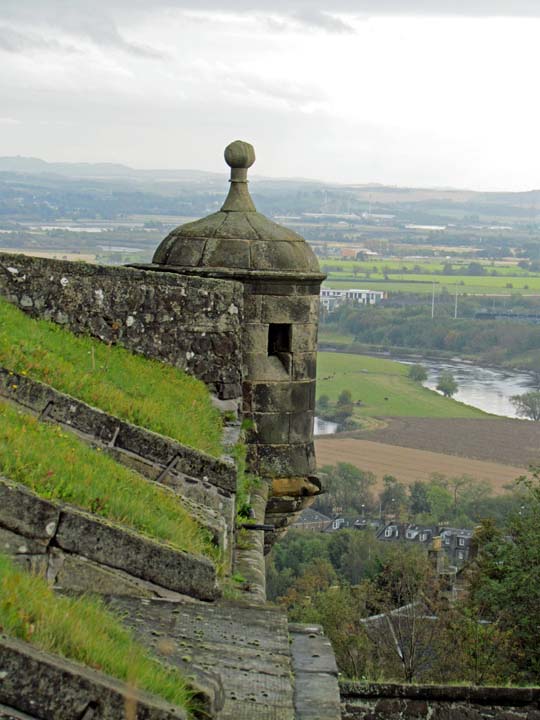
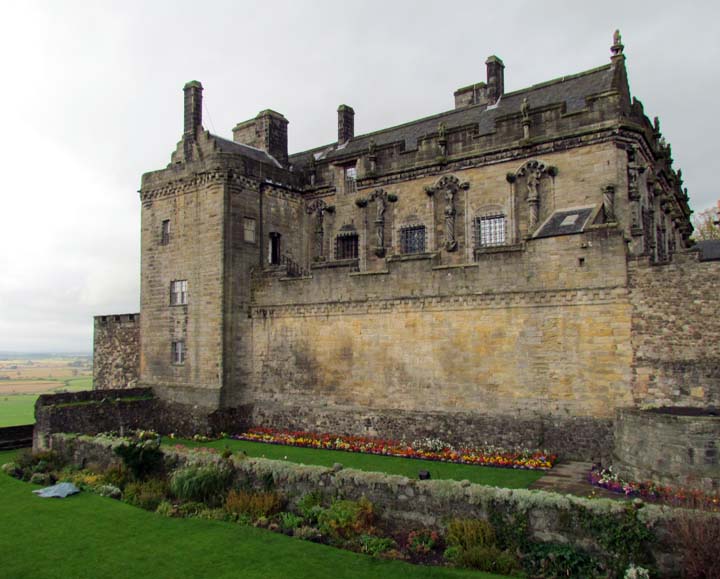
This is one of the few places we ran into a large number of visitors - strangely enough, not foreigners, but Scots. There were a number of large groups of Scottish children learning about their country's history.
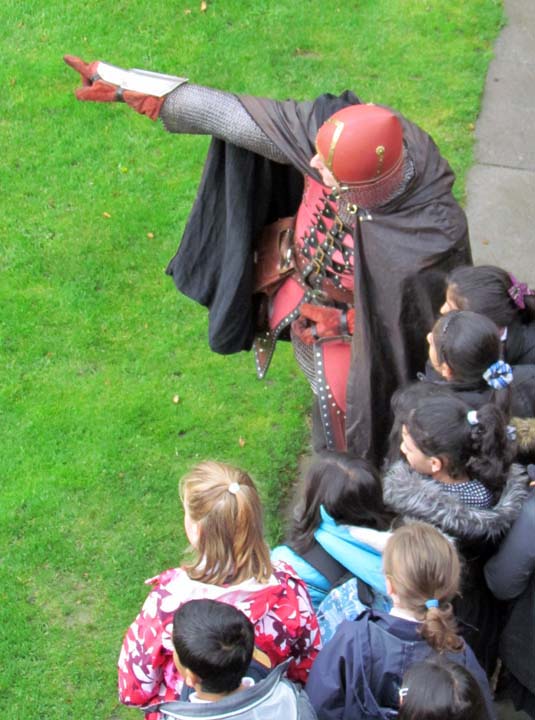
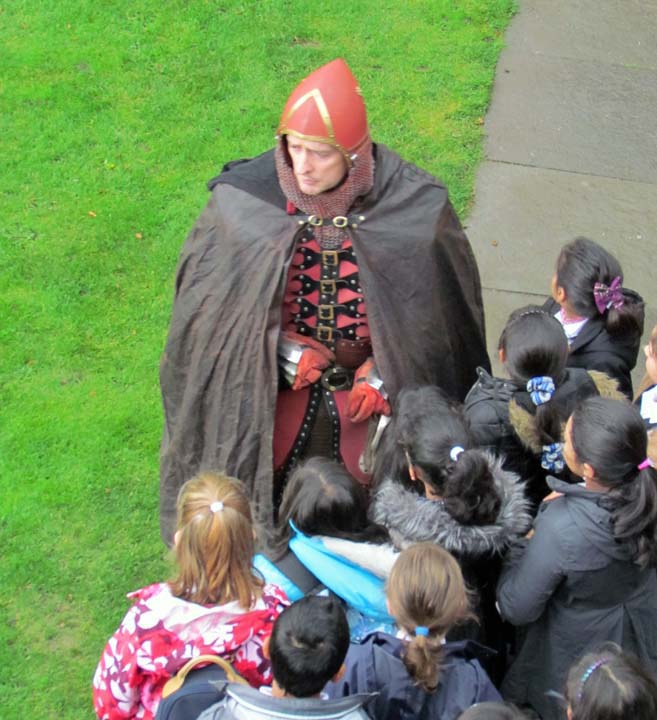
The garden along the front inner wall
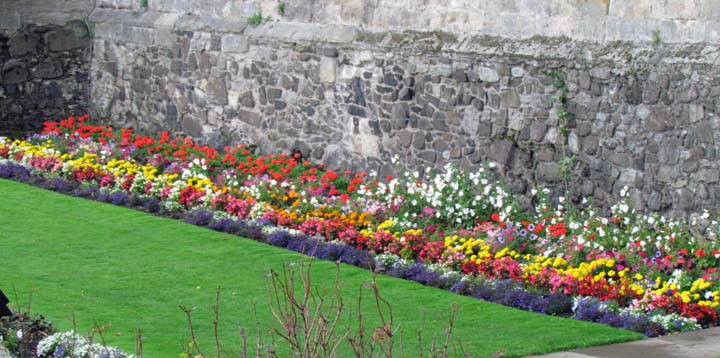
The central castle grounds
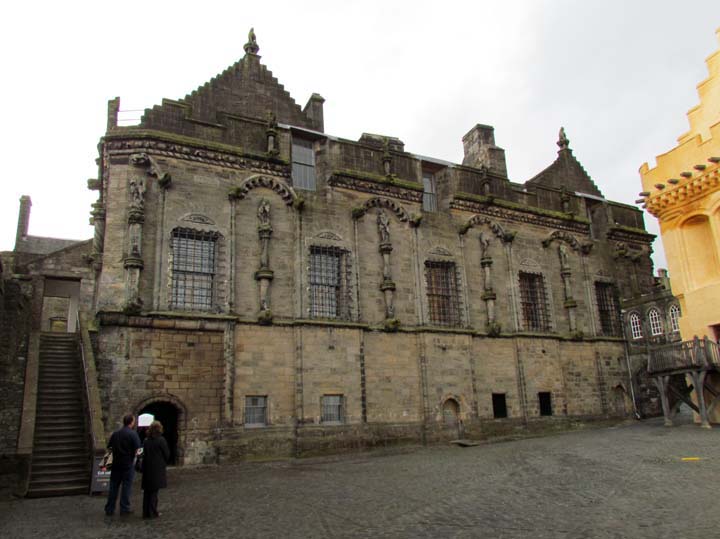
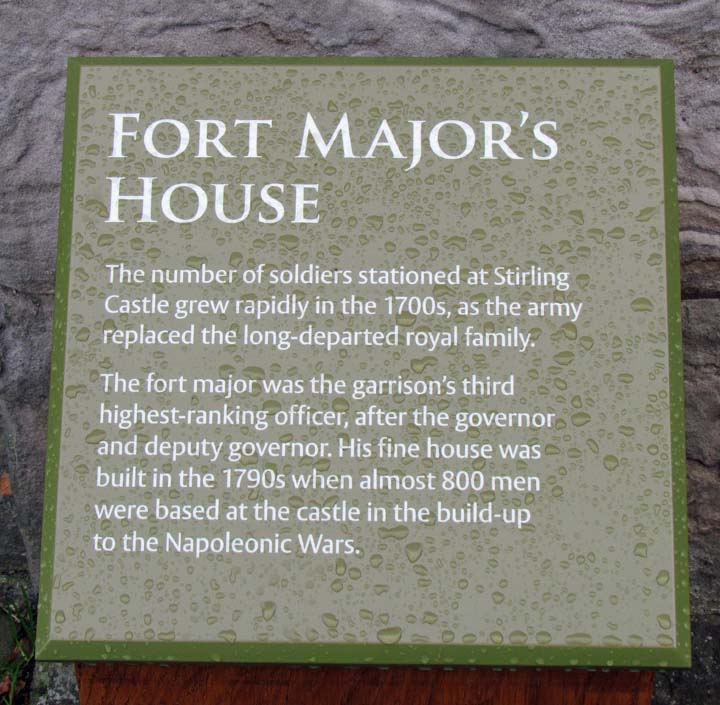
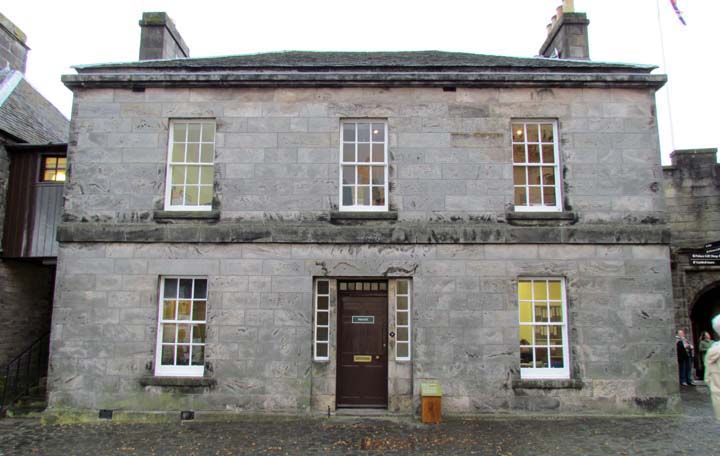
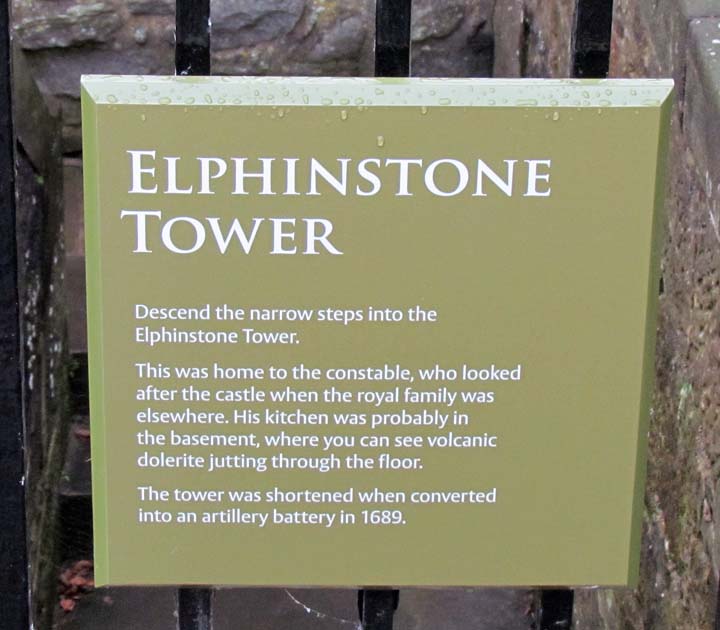
Looking out a spy hole in the tower
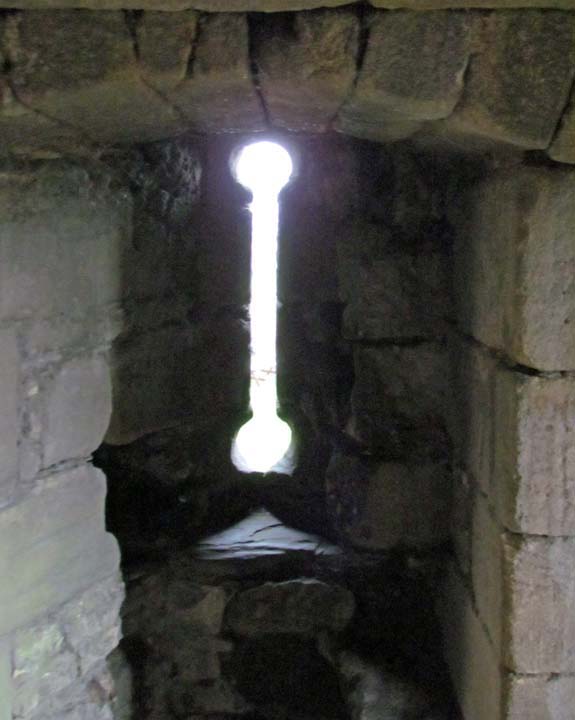
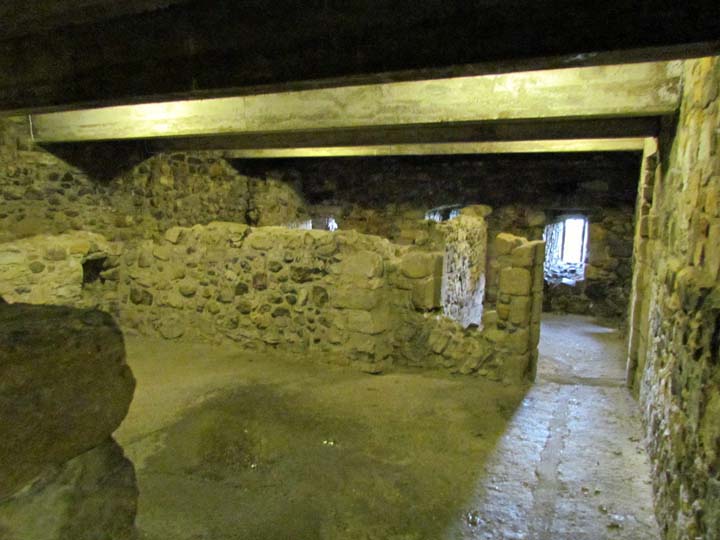
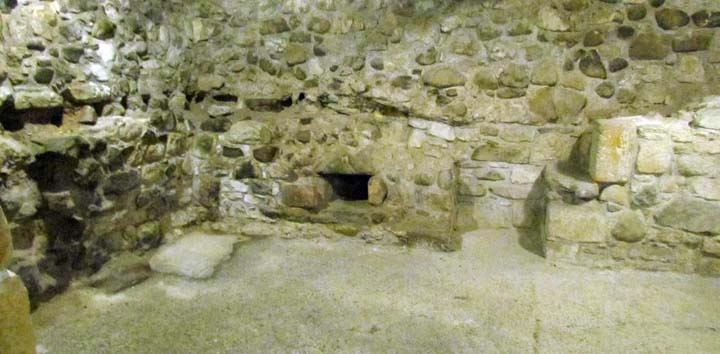
The castle well
See the note on the lower right hand corner of the Grand Battery sign
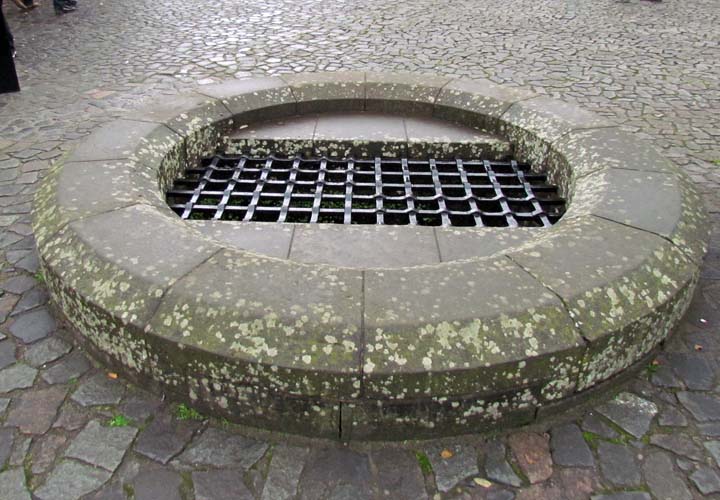
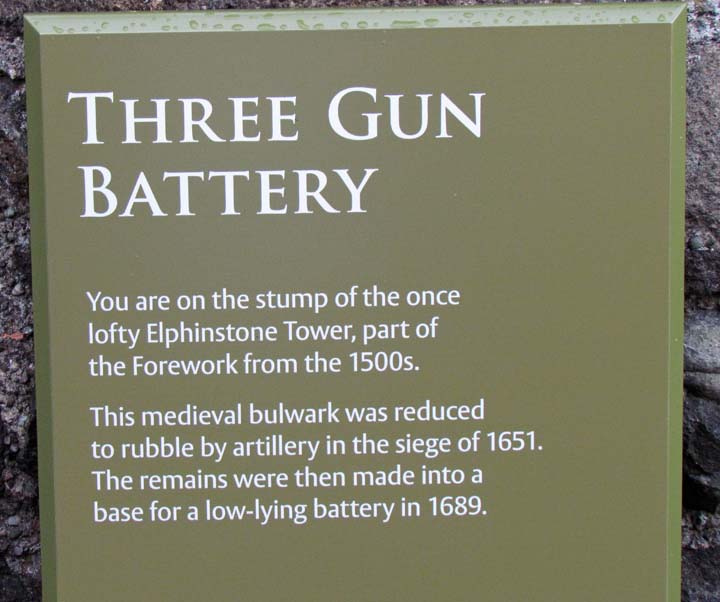
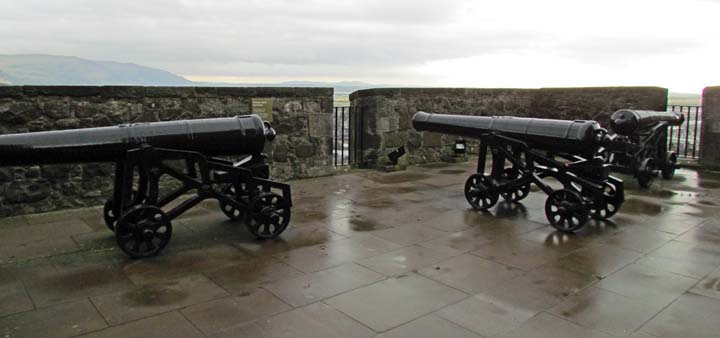
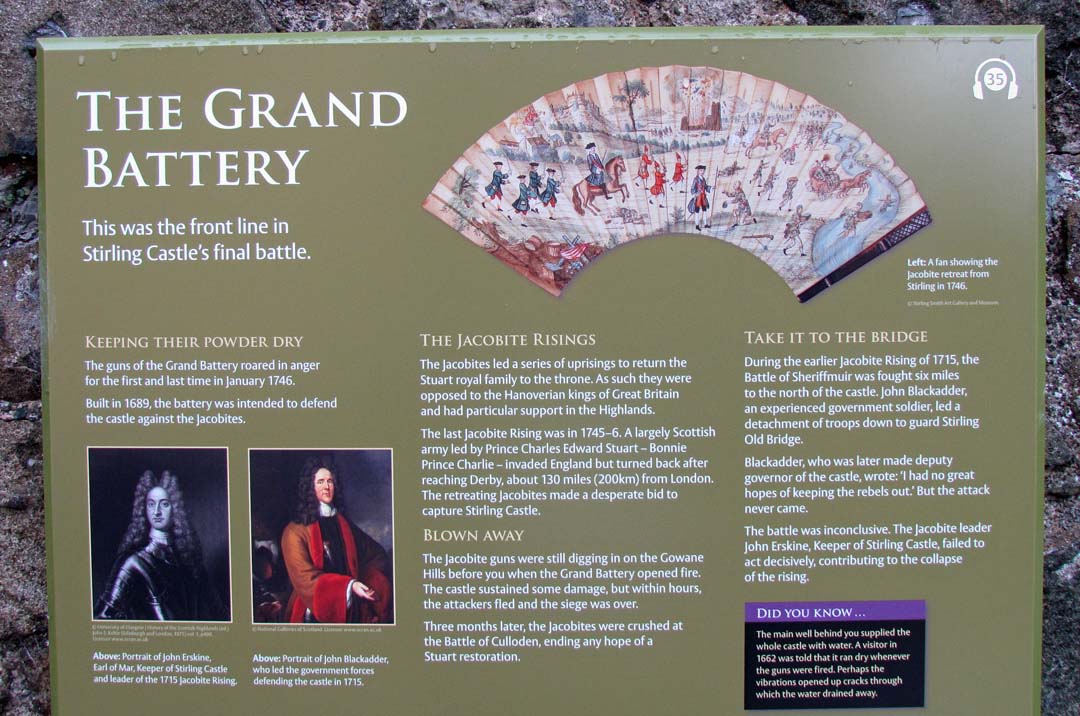
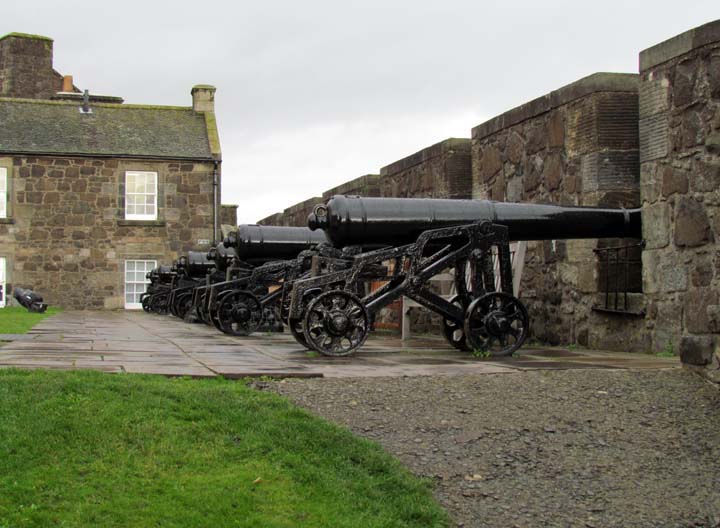
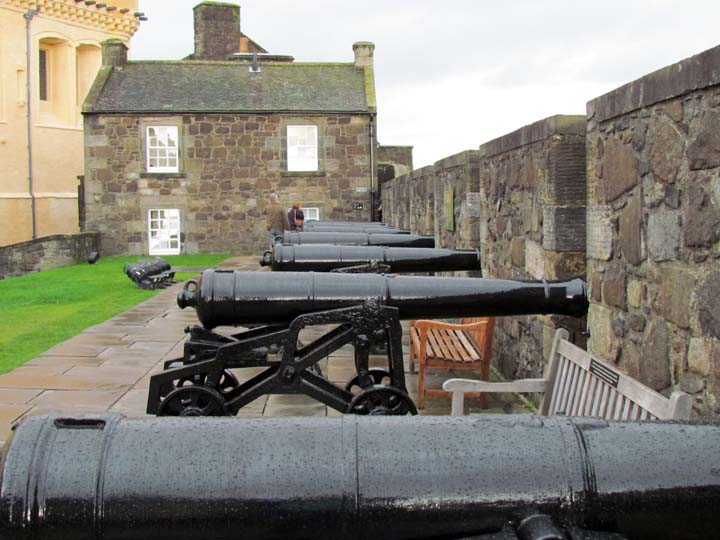
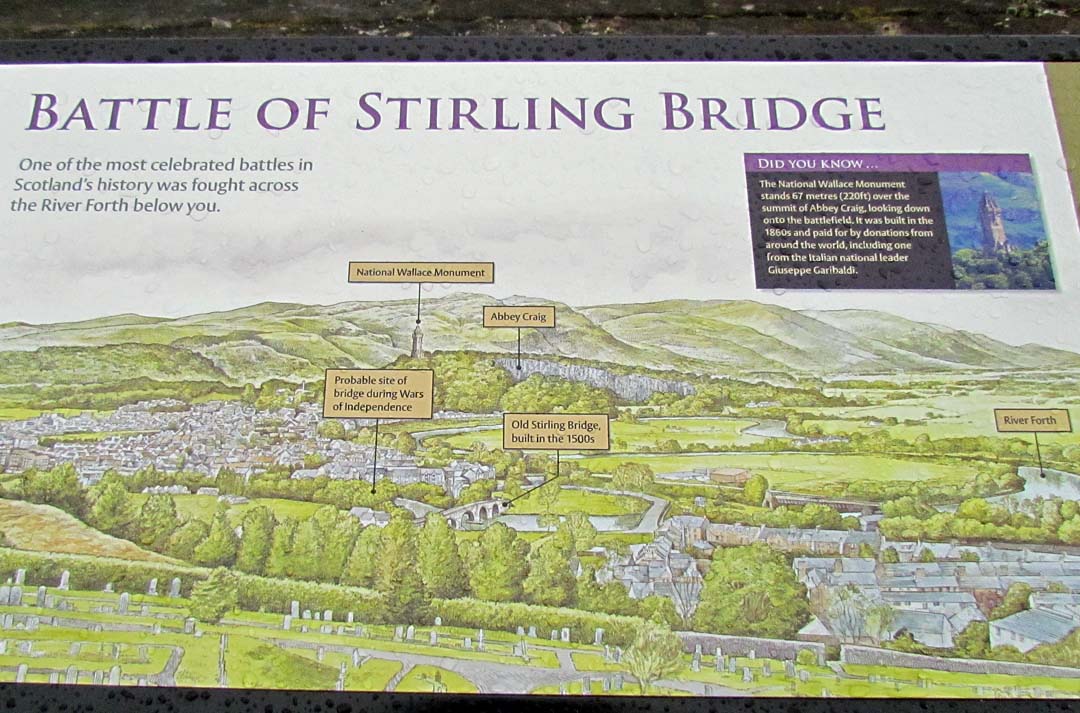
One of my most favorite pictures:
The view over a cannon from Stirling Castle to the Stirling Bridge Battleground and the Wallace Monument
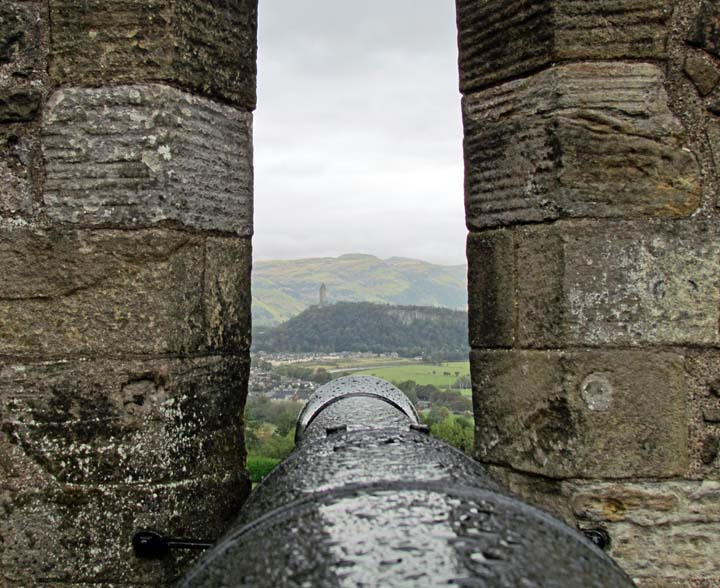
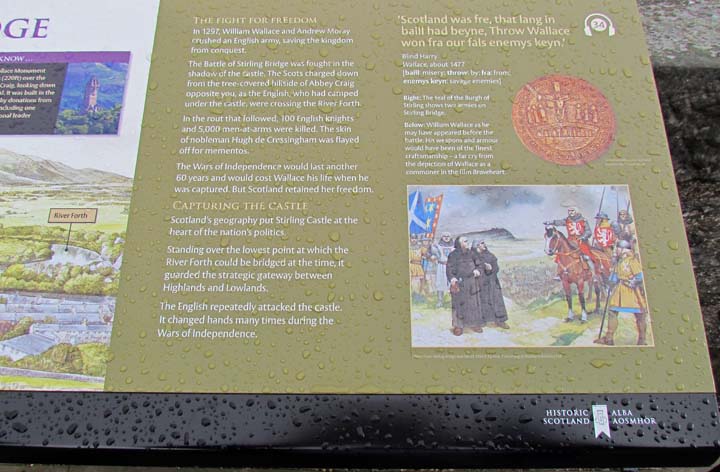
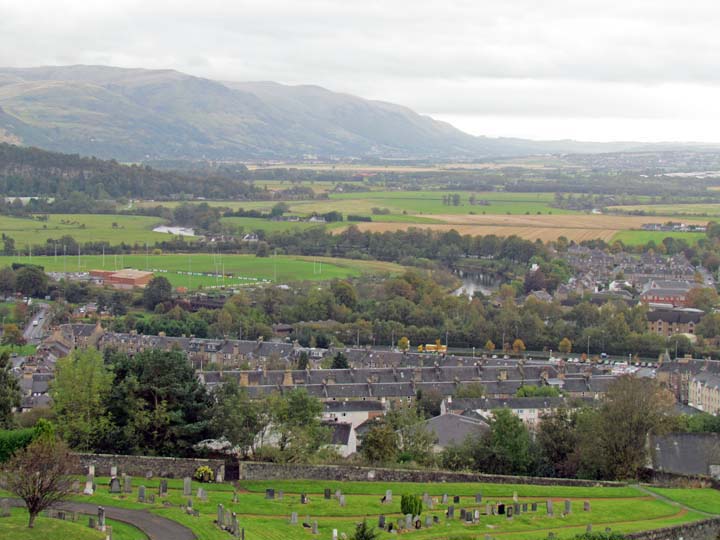
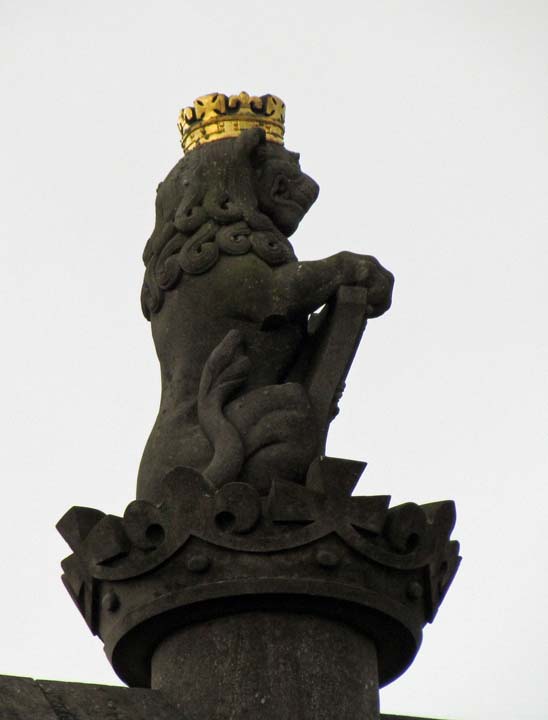
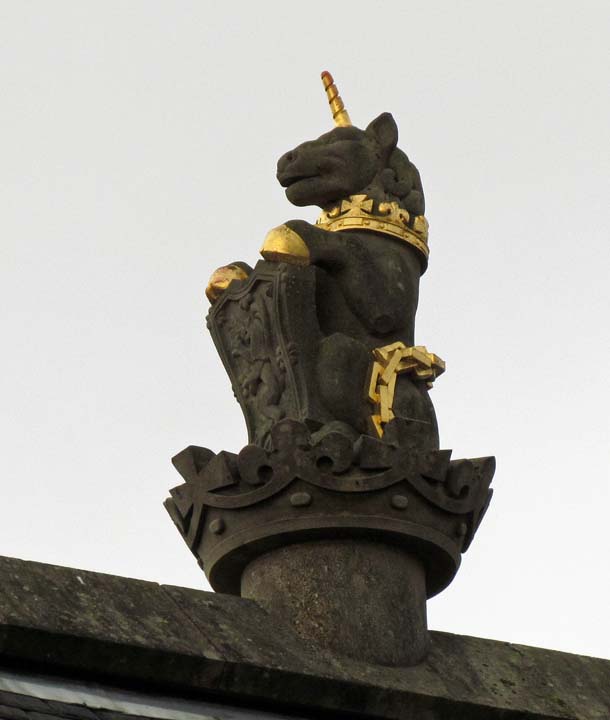
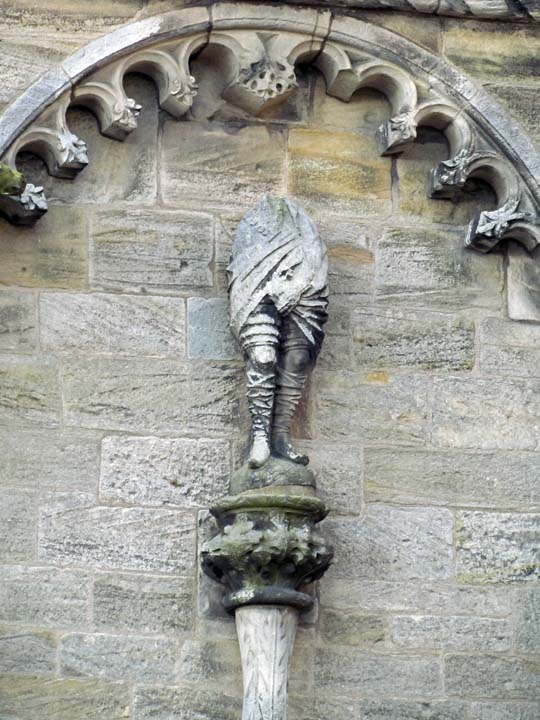
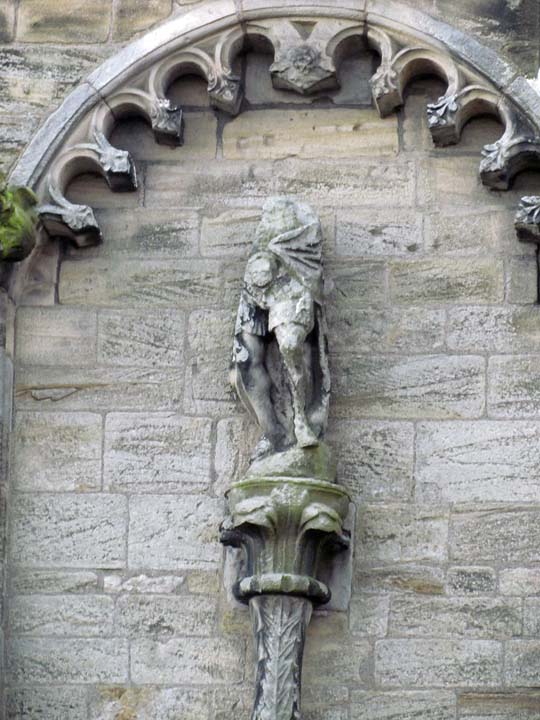
Statuary every where one looks
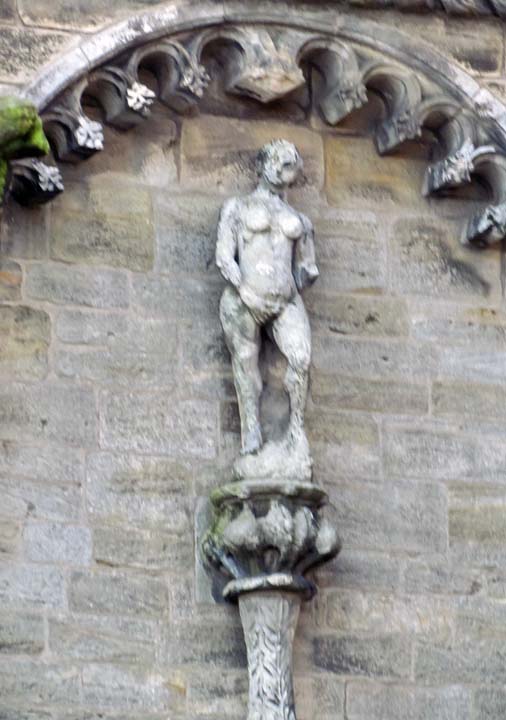
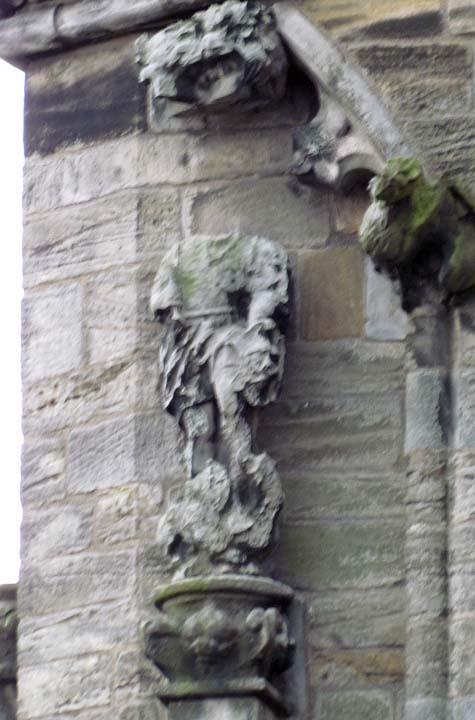
Courtyard
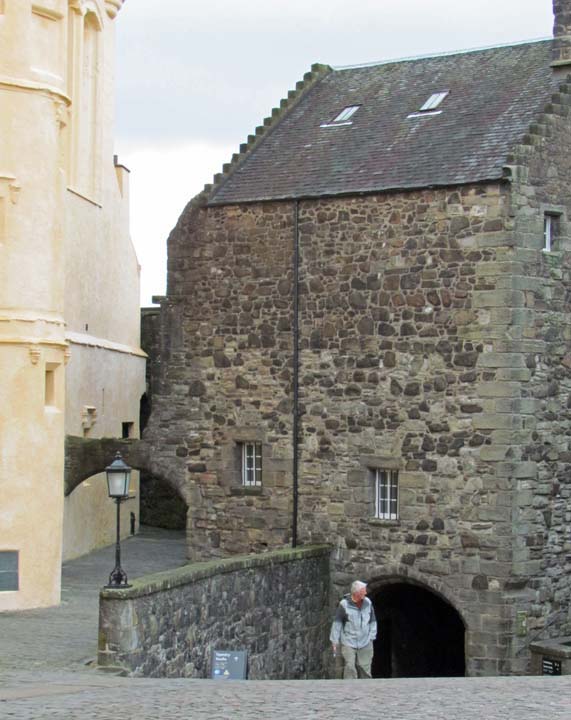
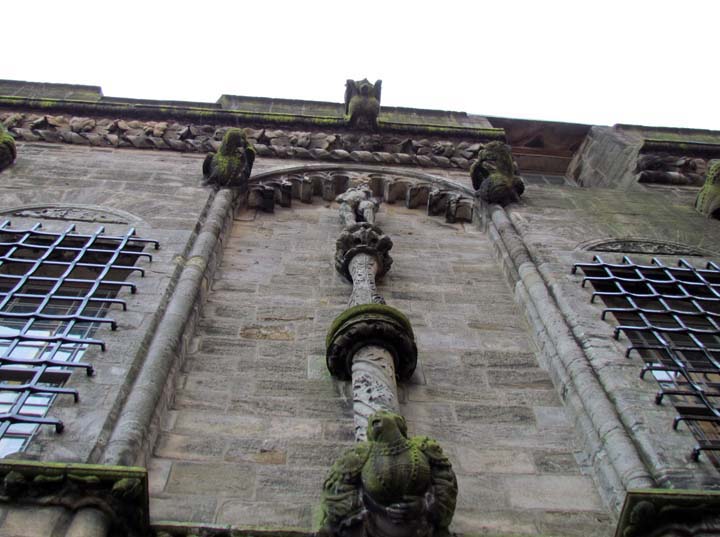
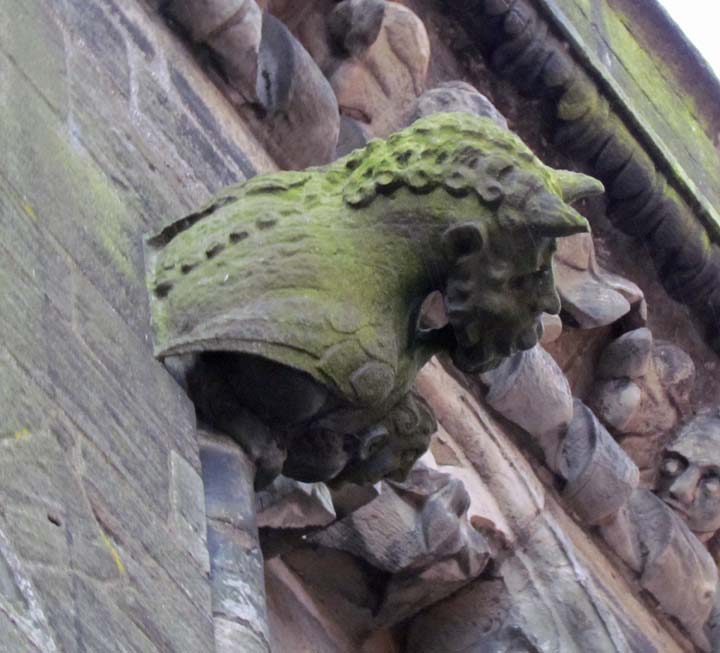
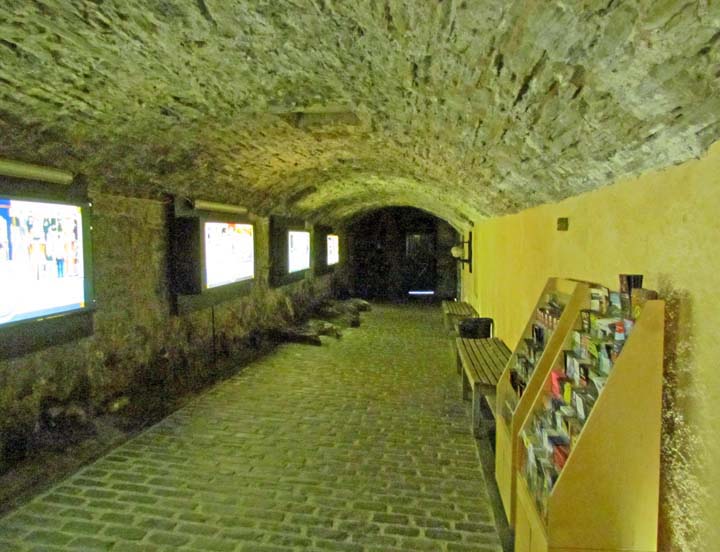 A
hallway under the inner wall
A
hallway under the inner wall
We wanted to see this Scottish showplace, but found however we went, we ran into dead ends
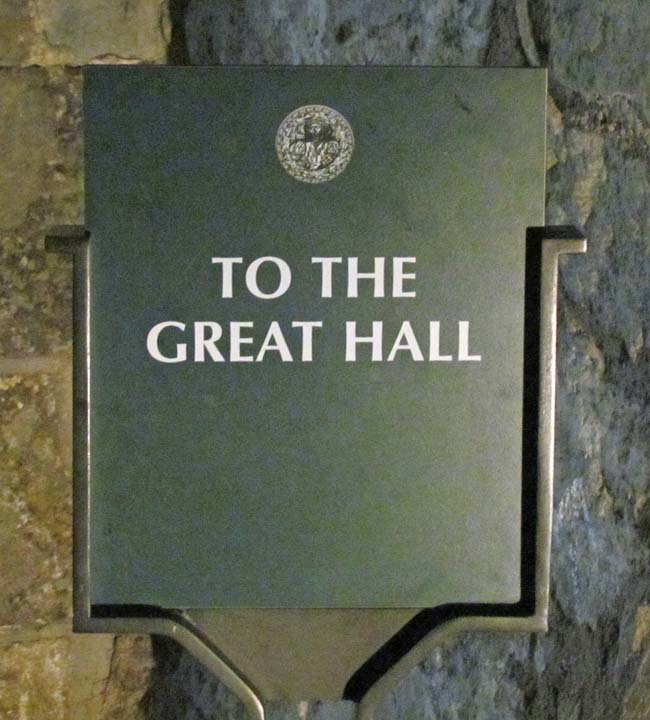
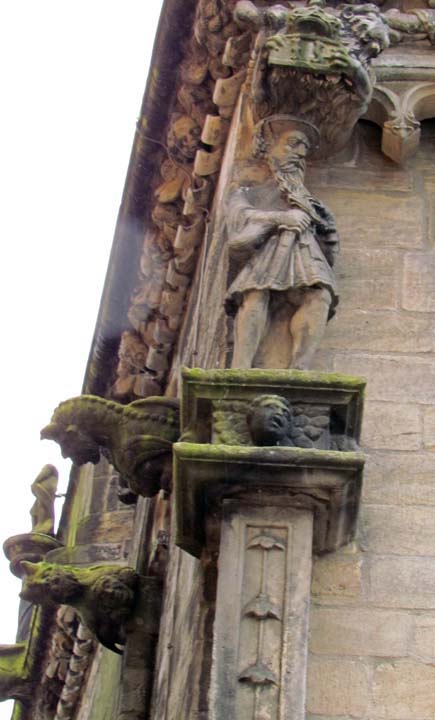
Along the way, we walked past the huge number of carvings on the walls
Gargoyles galore!
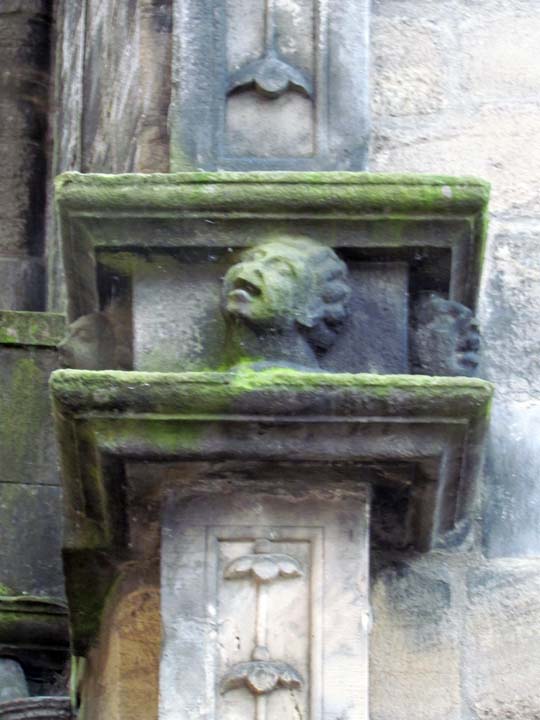
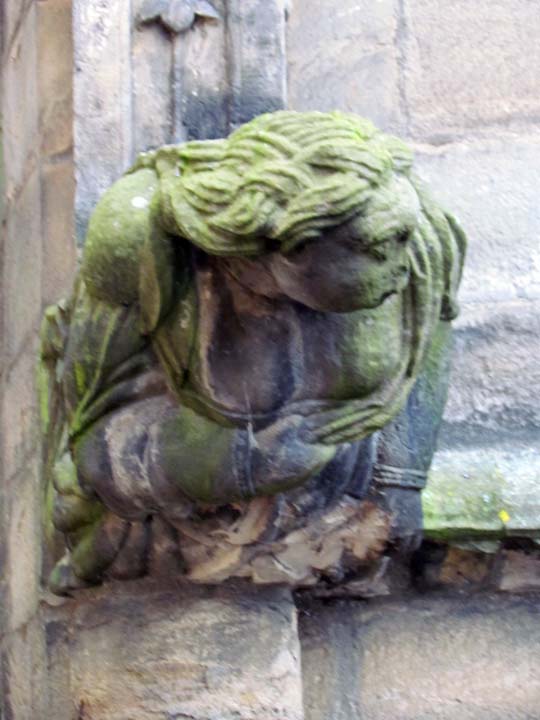
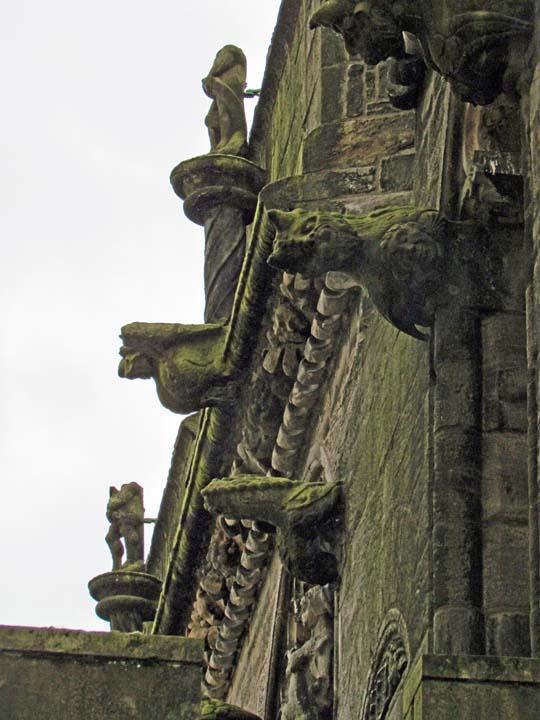
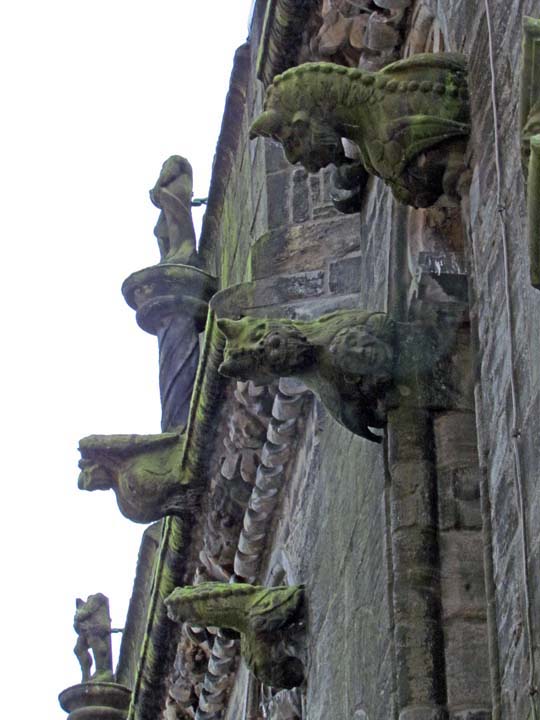
The spirits of the Castle moved these young men to a duel -
They had a great deal of fun and people watching cheered as one or the other seemed to succeed - ended with parents getting bored and all left laughing.
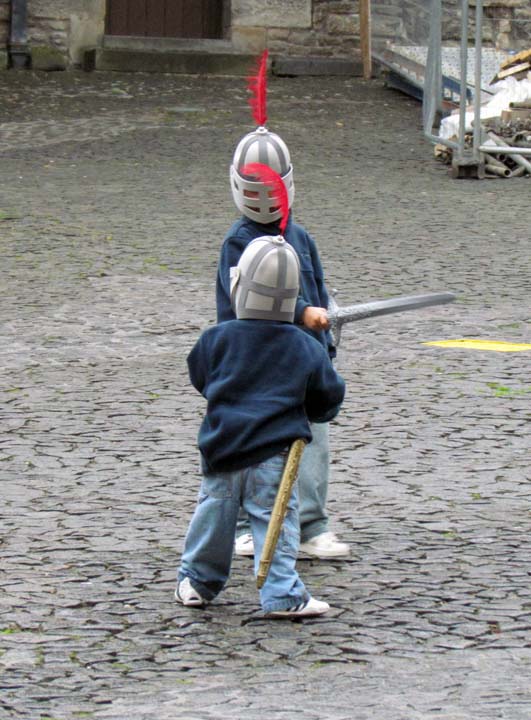
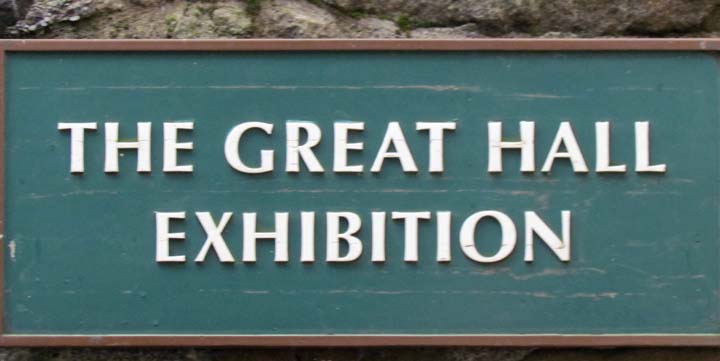
Finally we found it - could see it from wherever one stood, but couldn't find the right door
Finally we found a stairway to go through this suspended hall
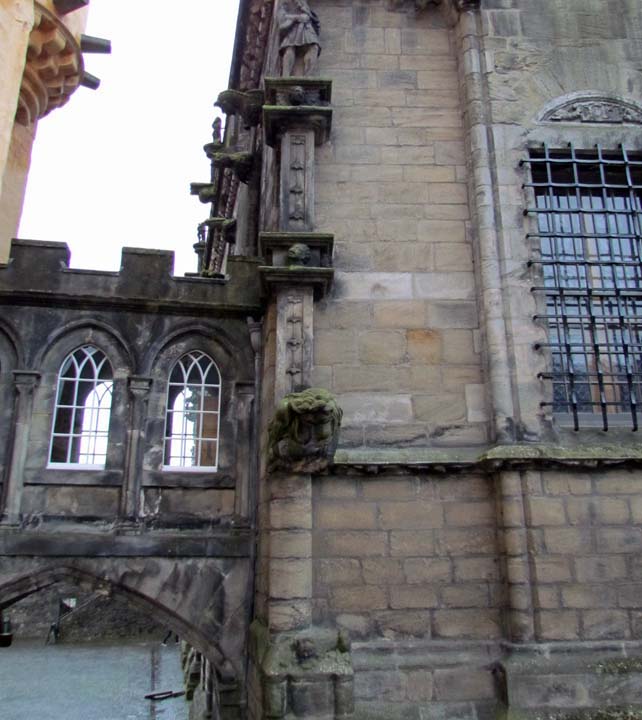
One of the finest showplaces of Scotland
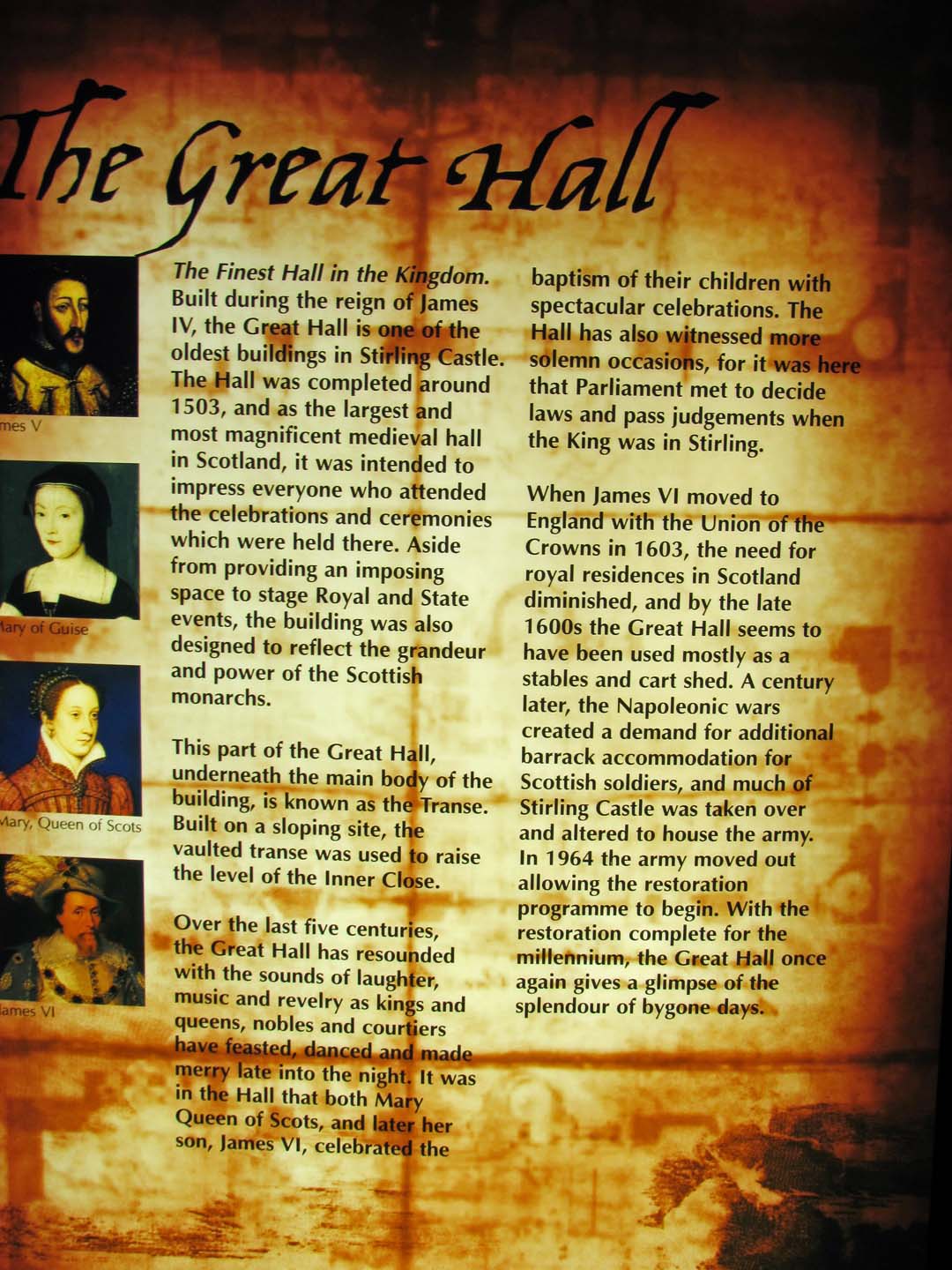
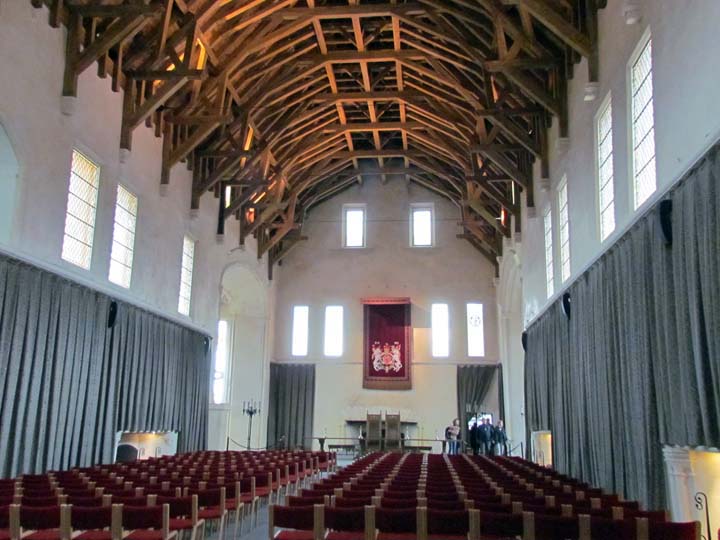
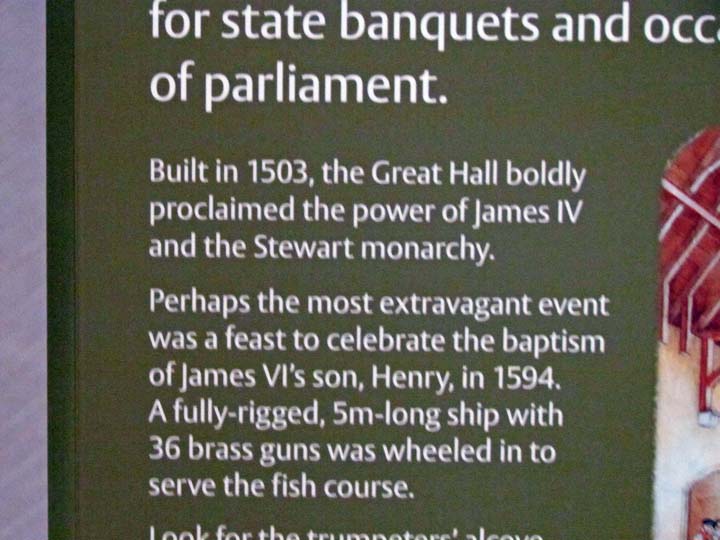
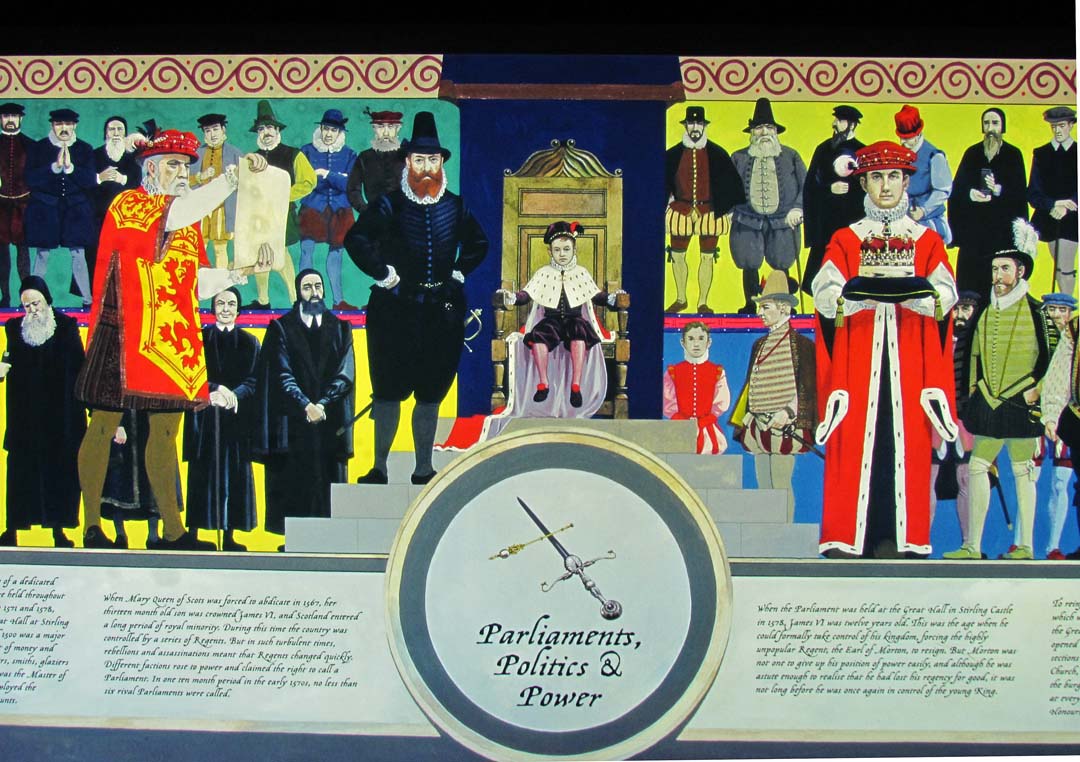
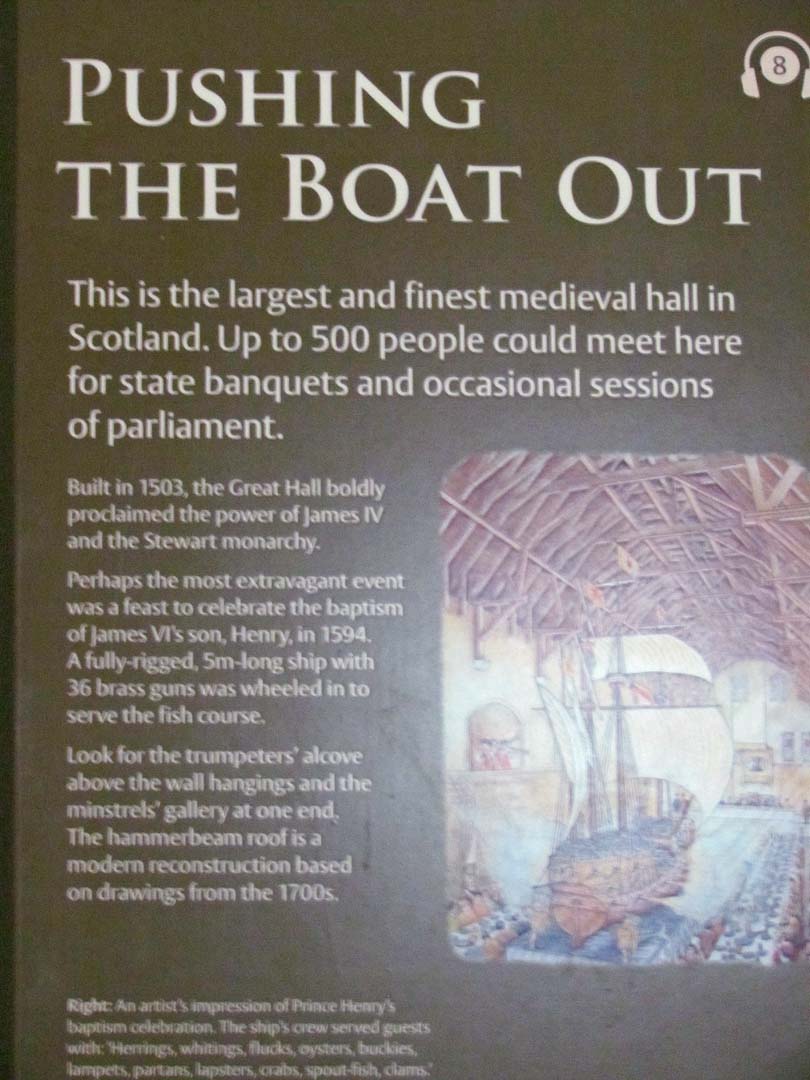
Huge room - little heat!
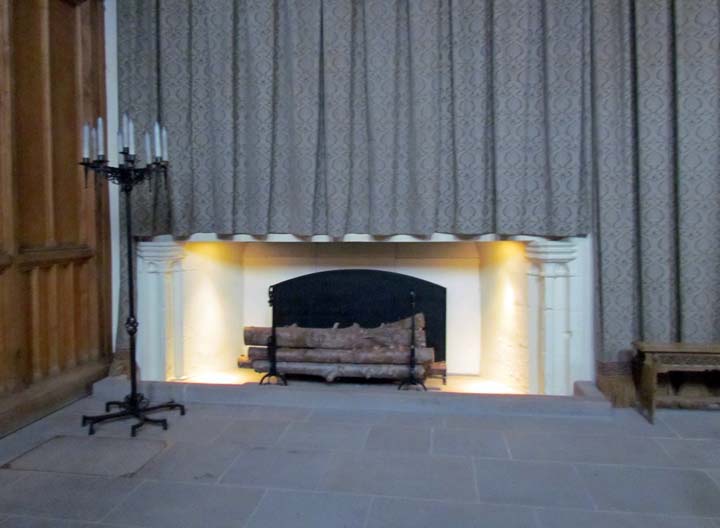
Not a single nail !
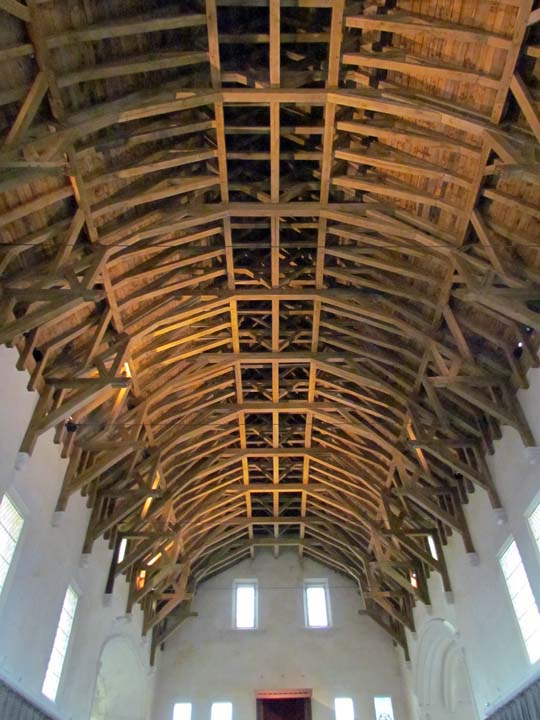
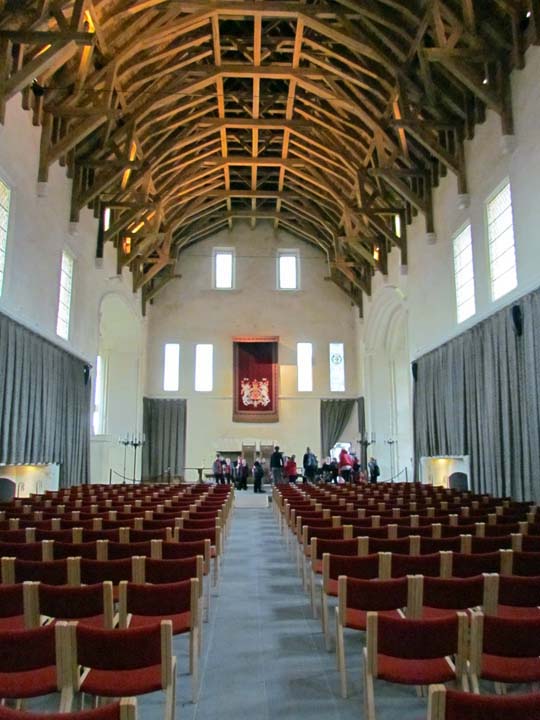
The symbol of the King and Queen
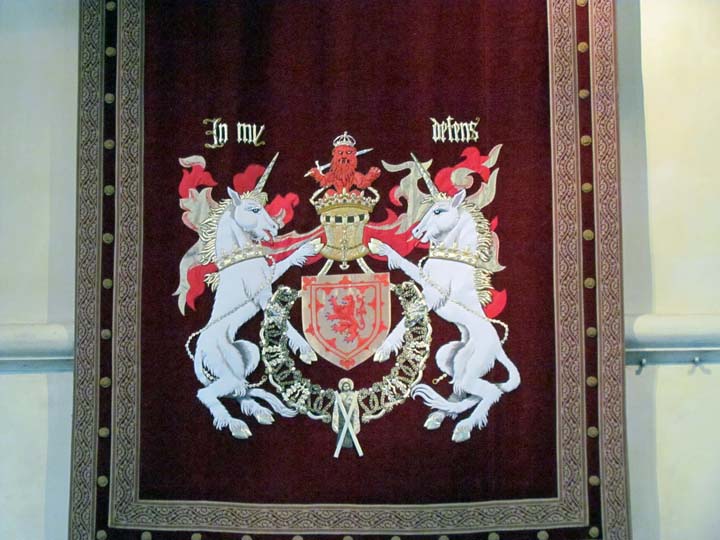
Of course, we mean Queen Jackie of the Kingdome of Laurel
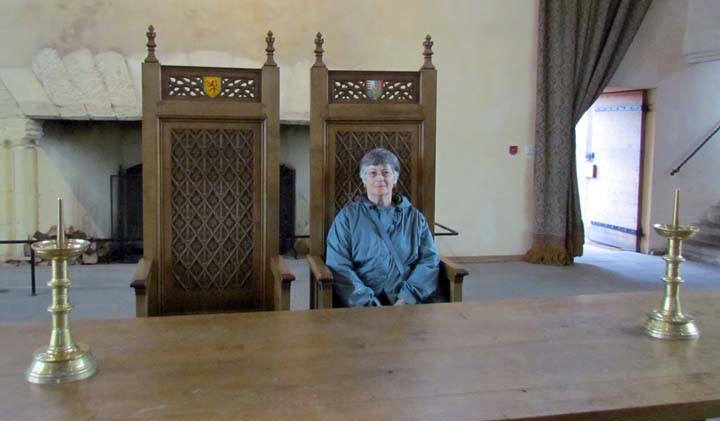
And King Earl of Macon
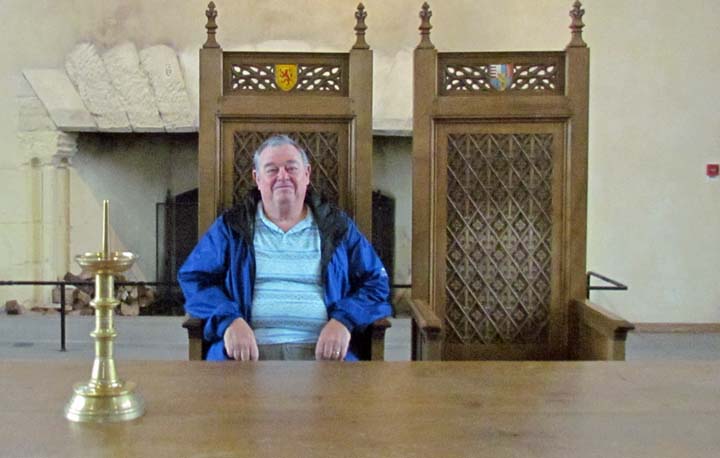
The Royal Dining Table
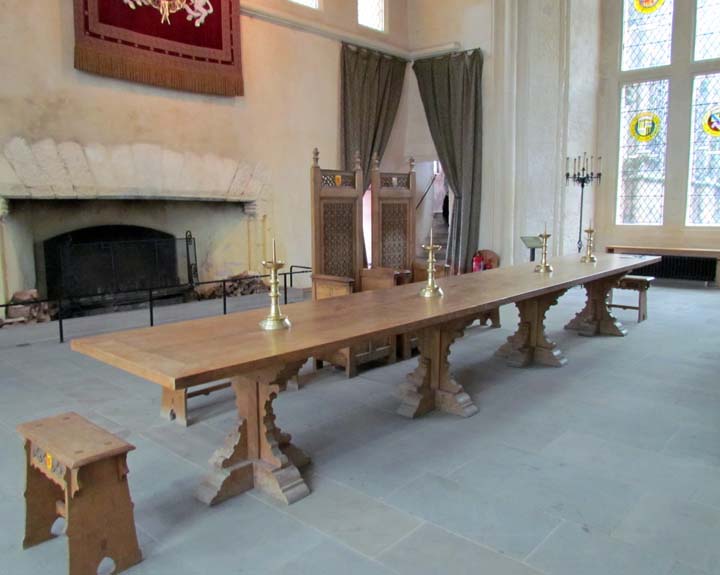
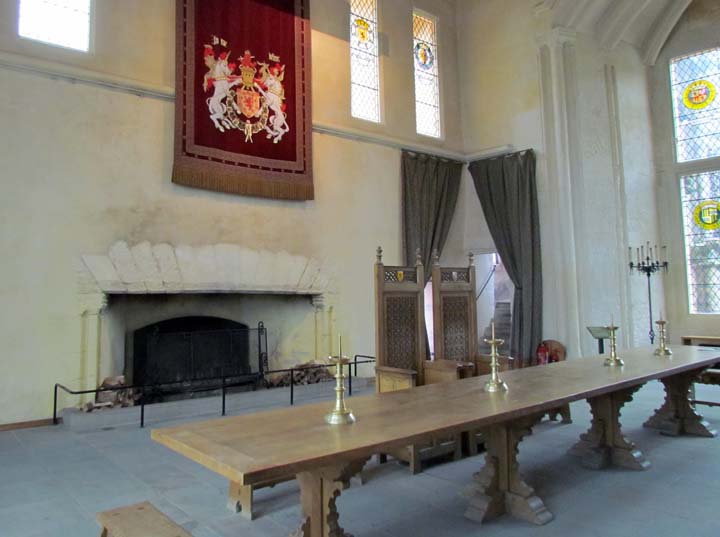
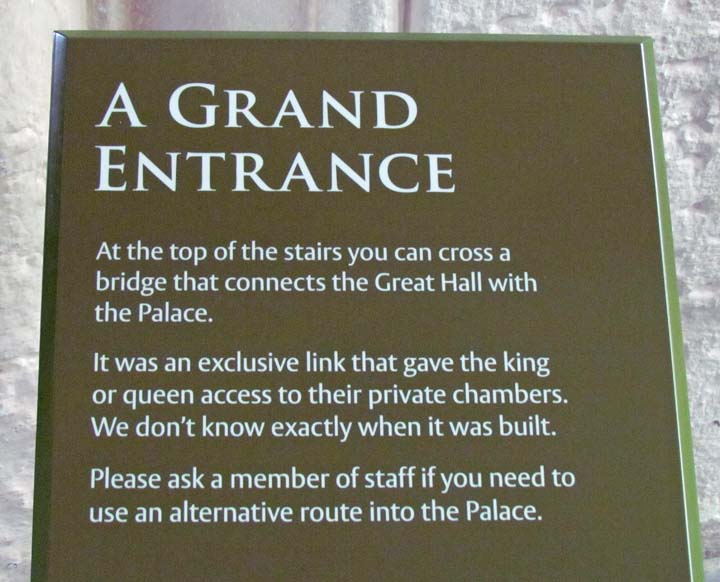
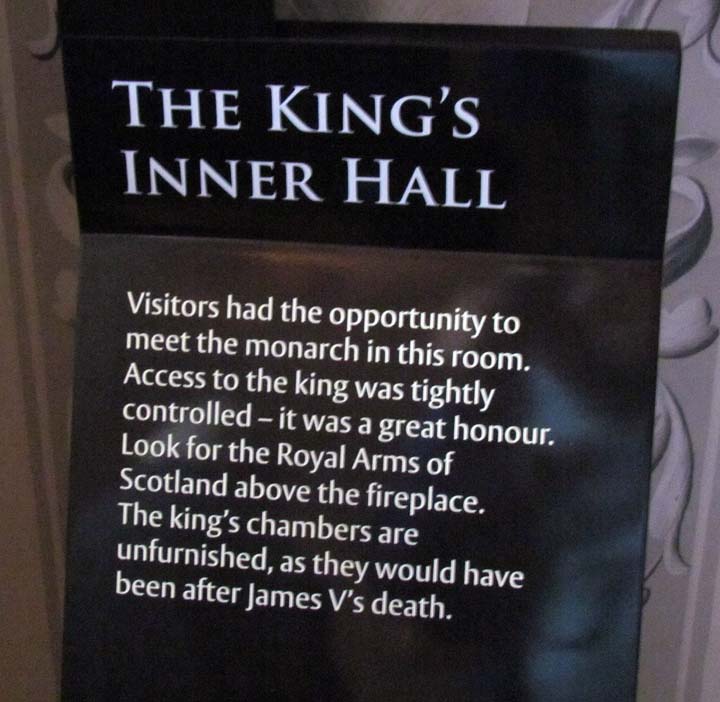
The ceiling of the King's Chambers - The Famous Stirling Heads
So important we've a separate page just for them.
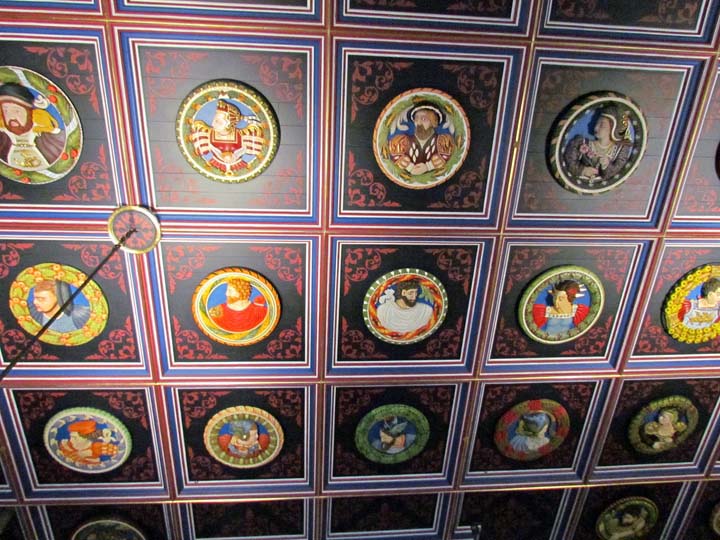
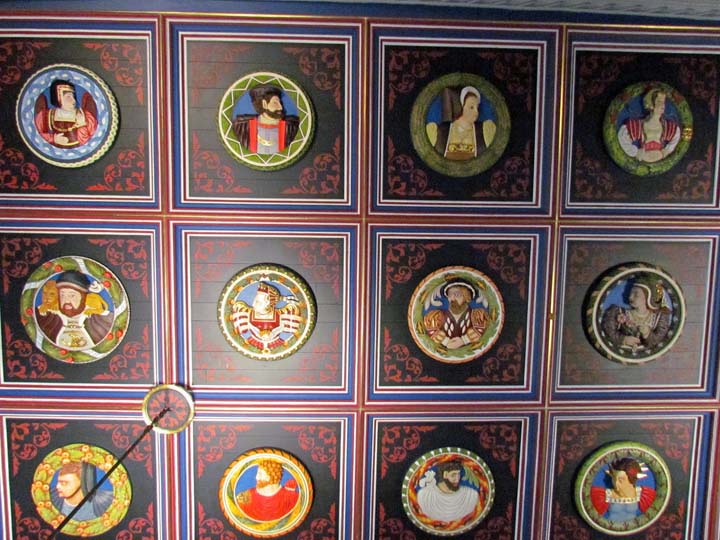
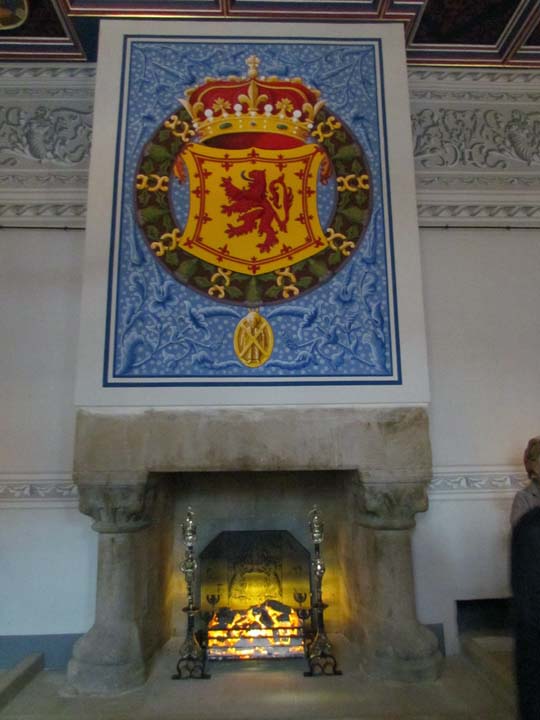
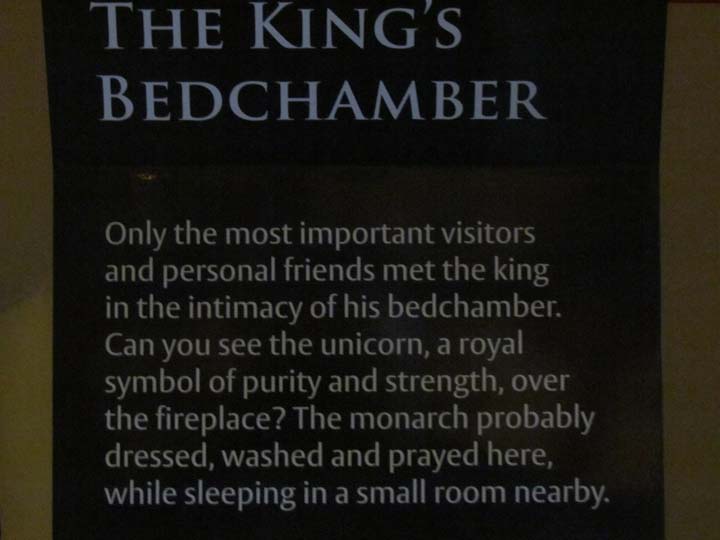
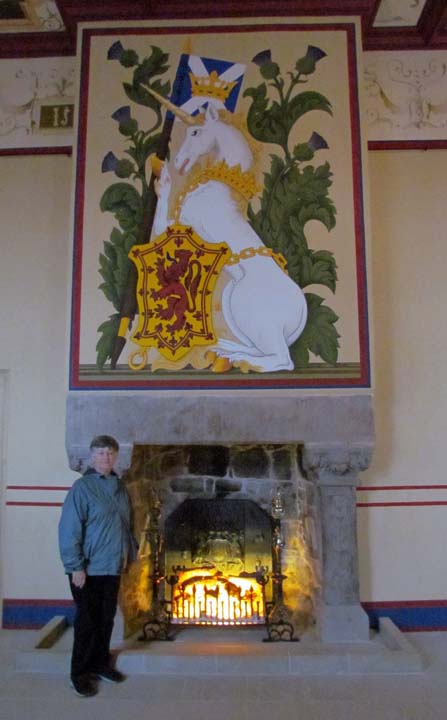
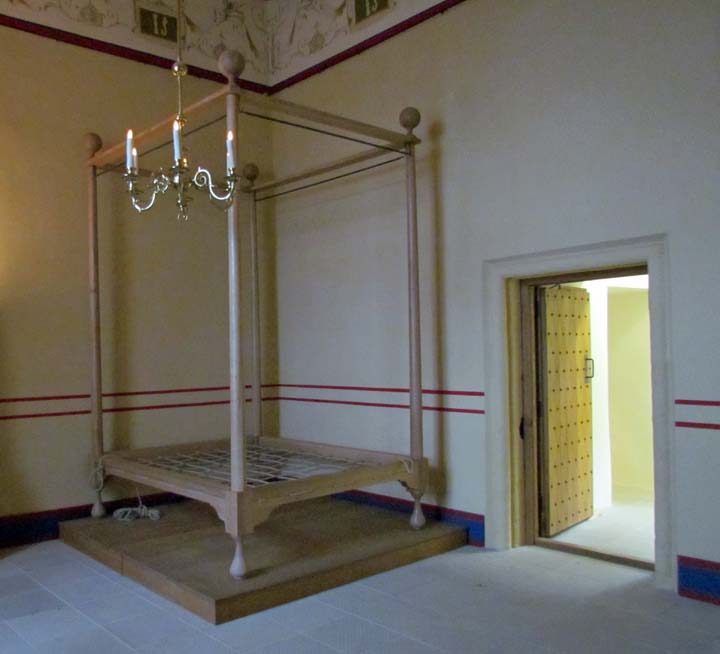
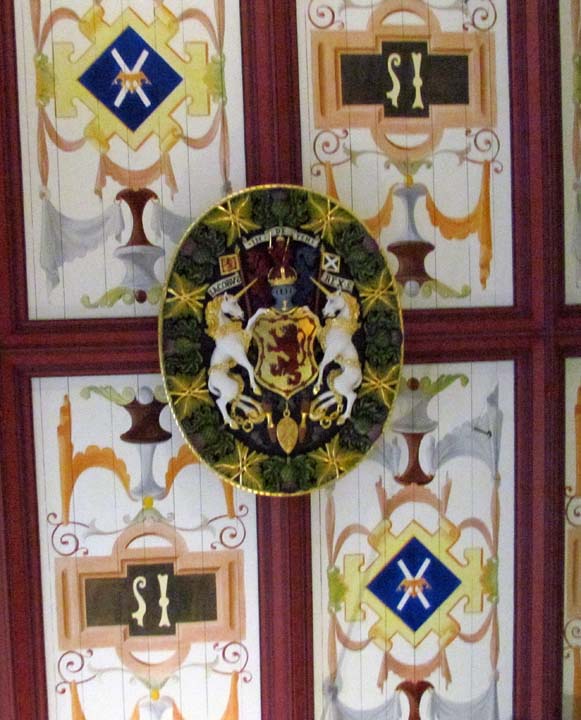
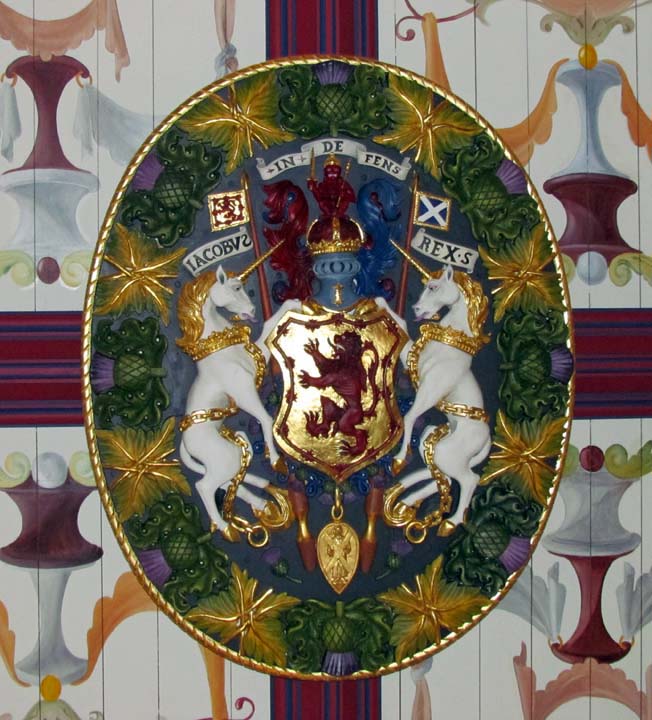
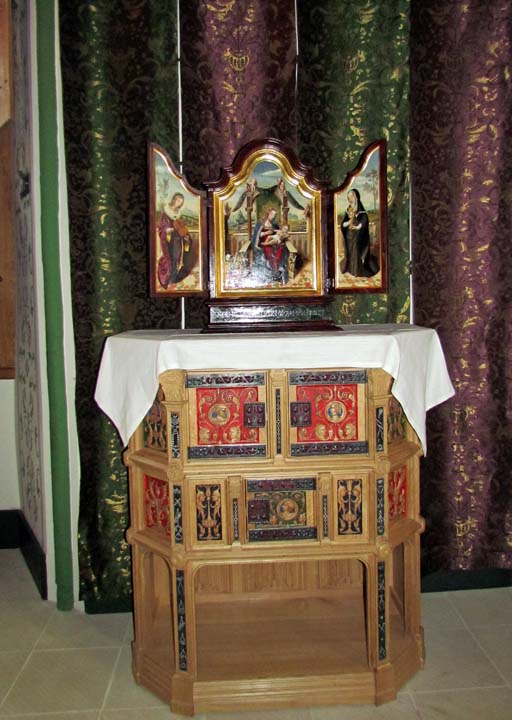
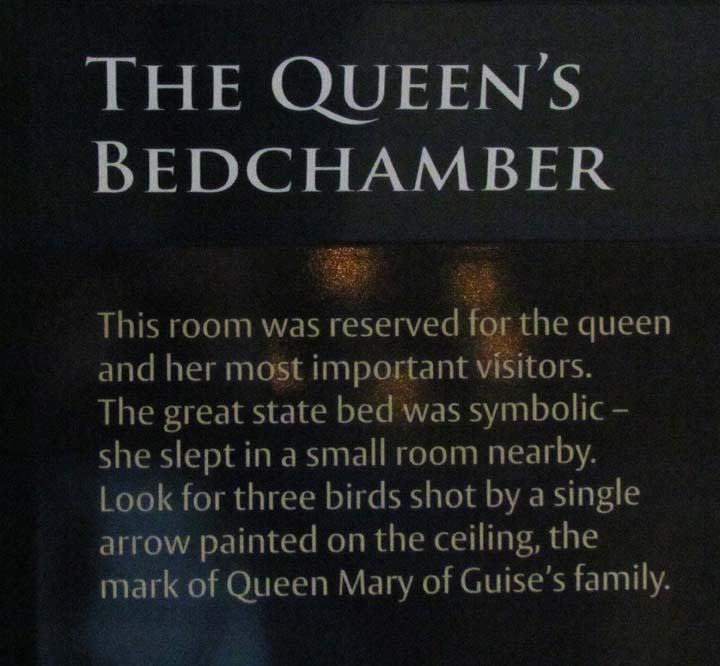
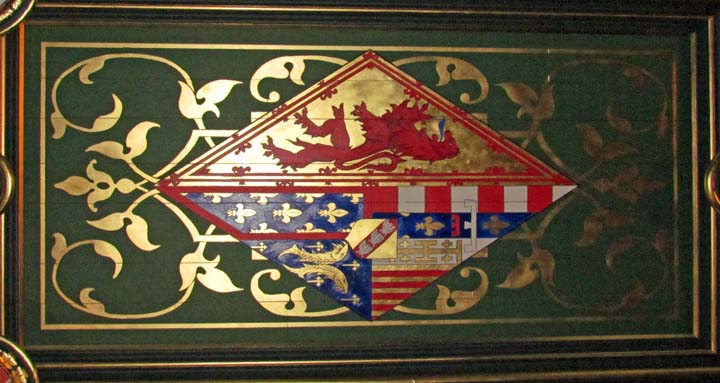
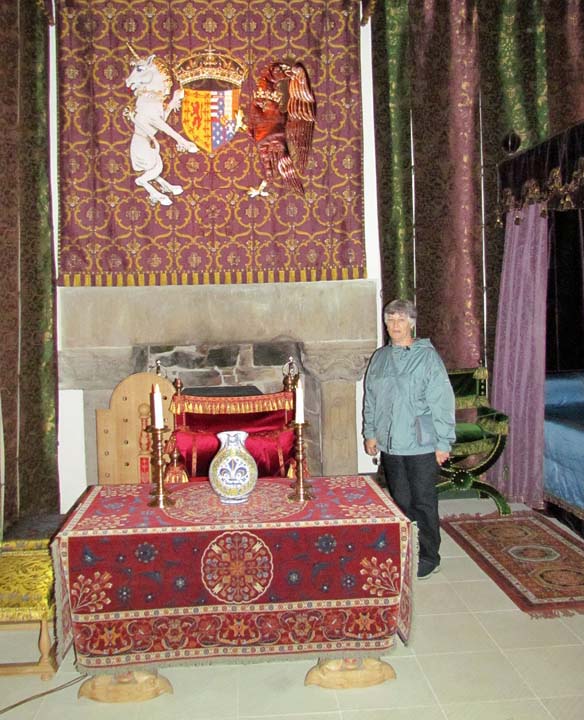
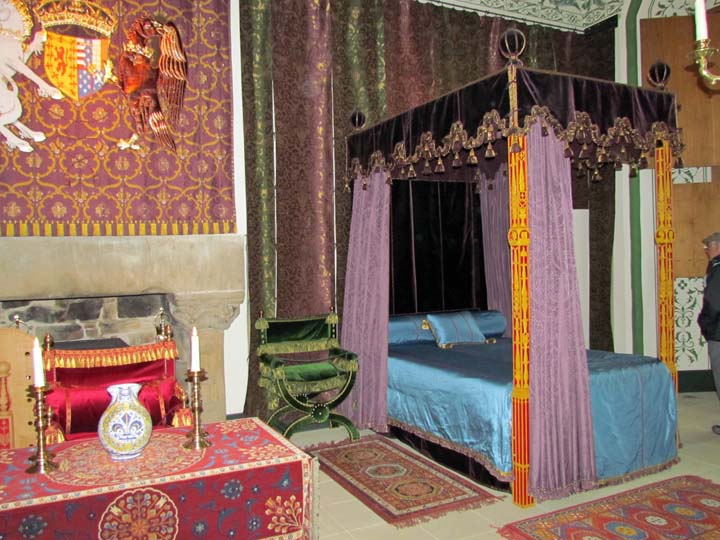
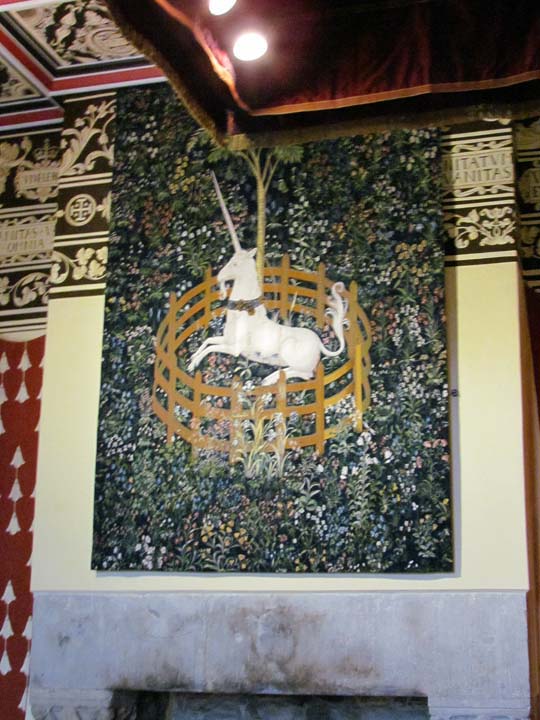
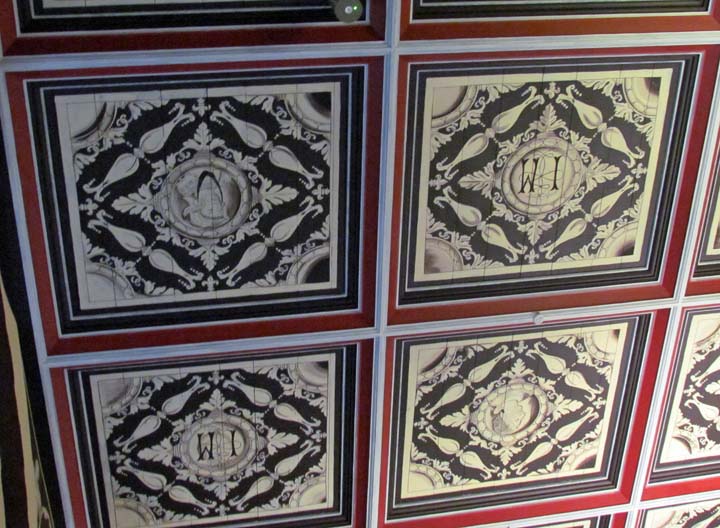
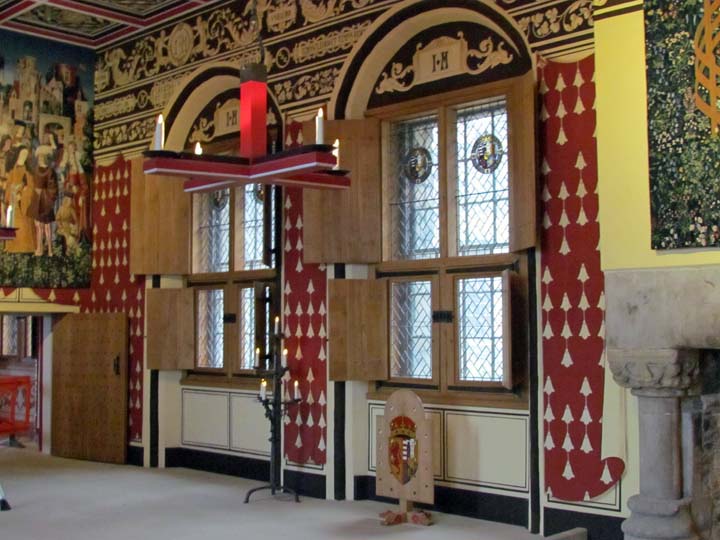
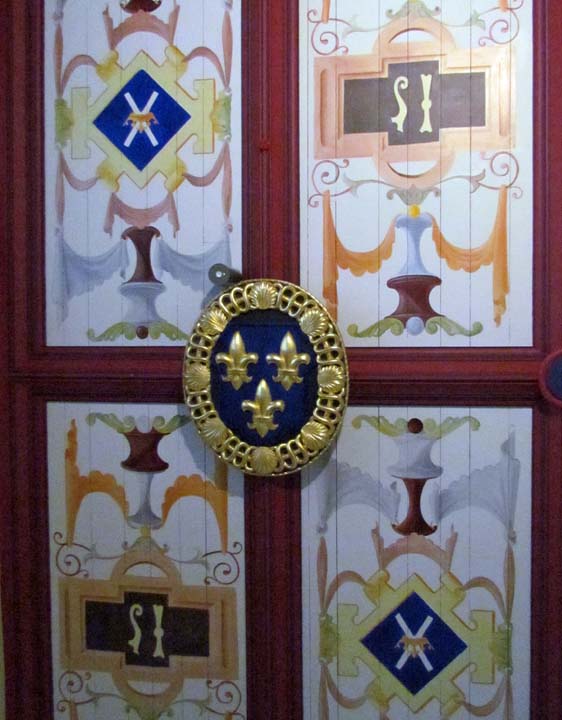
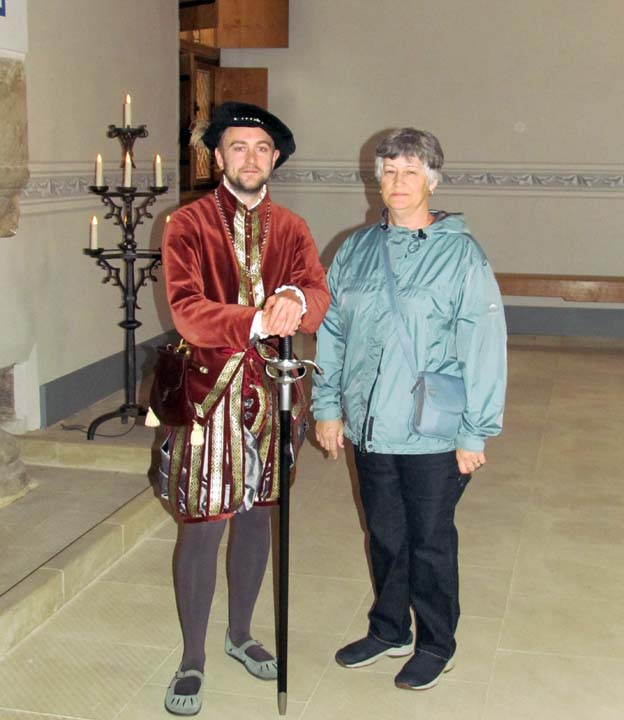
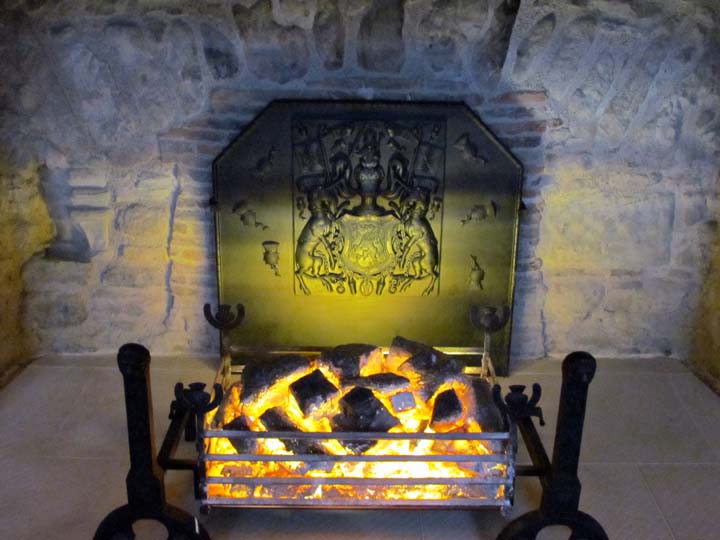
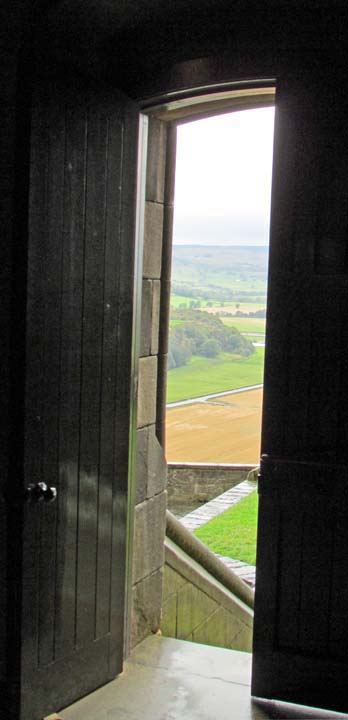
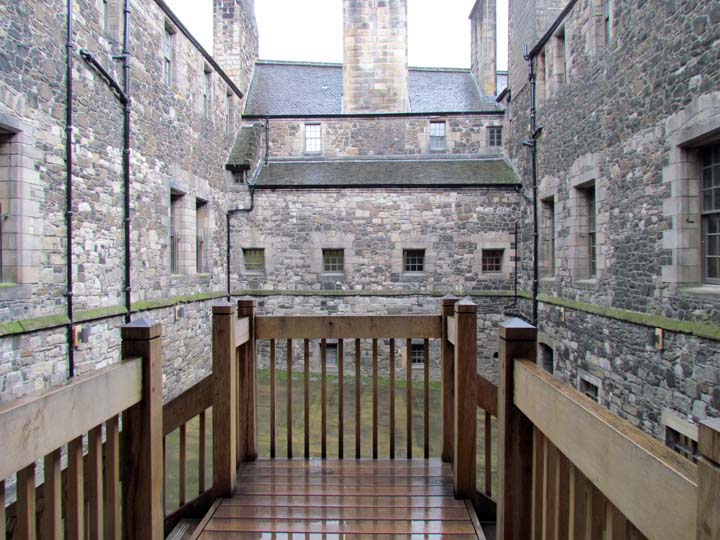
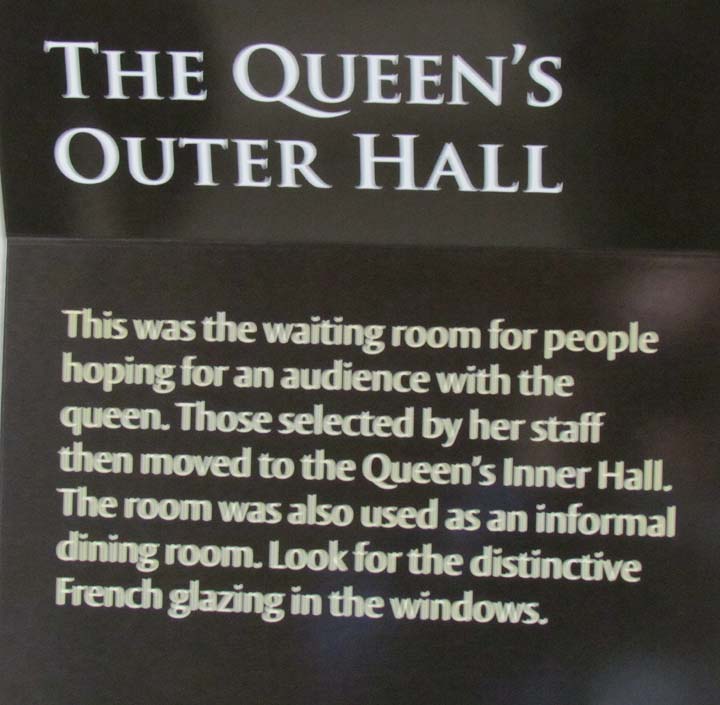
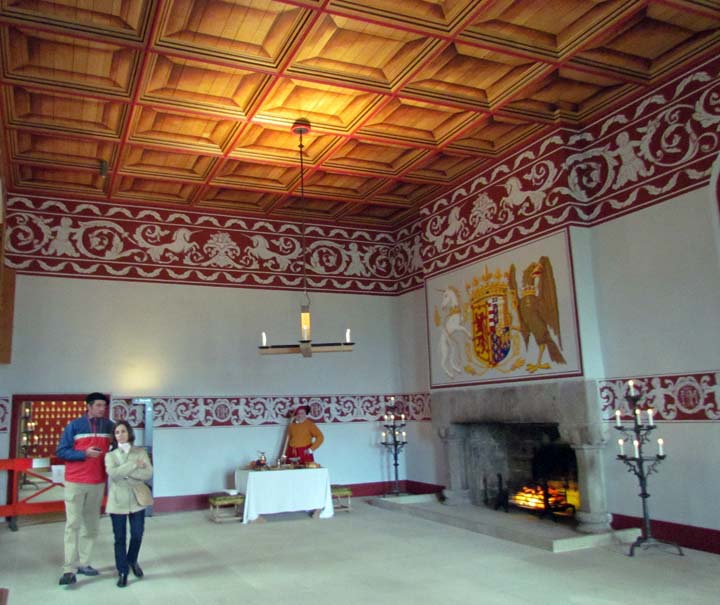
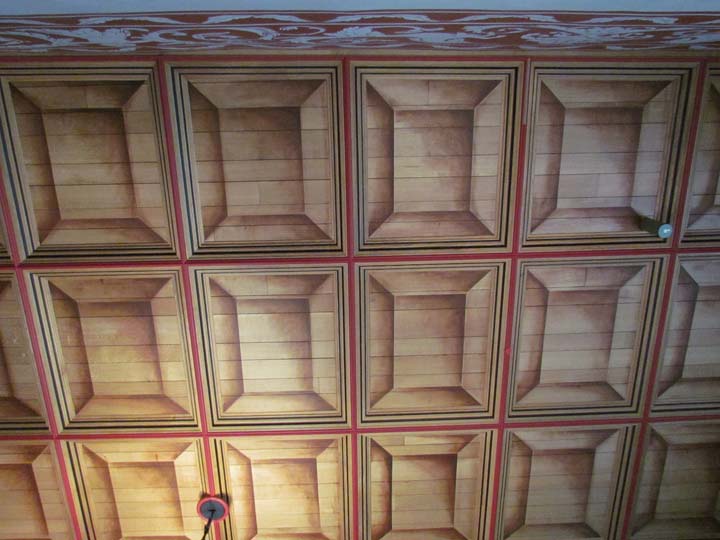
Yes, the ceiling is painted as an optical illusion
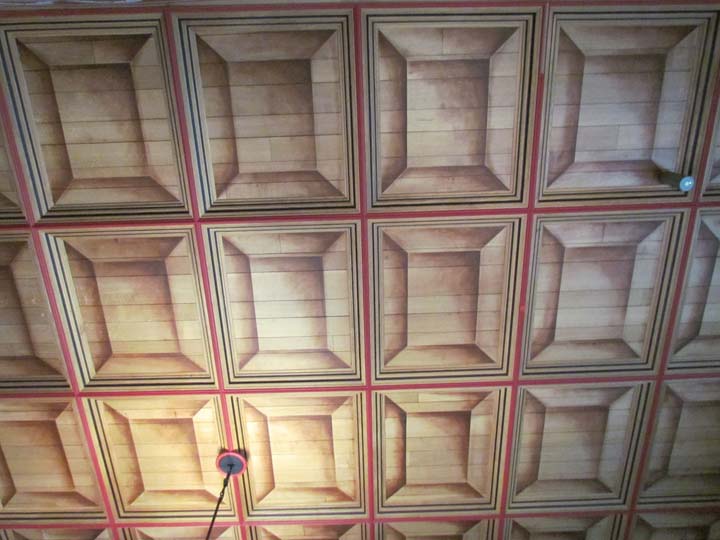
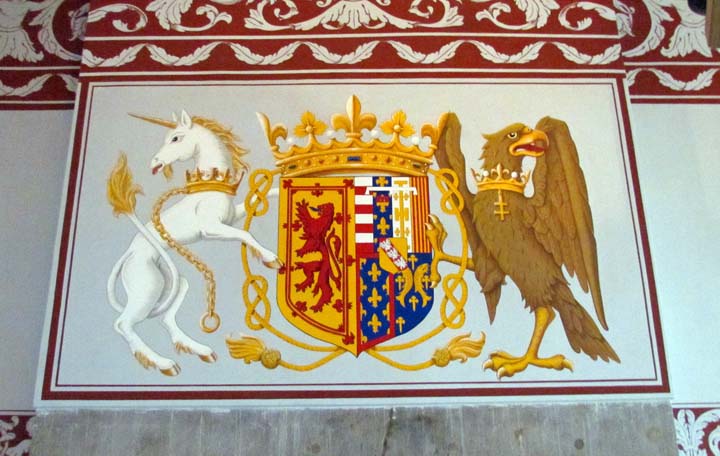
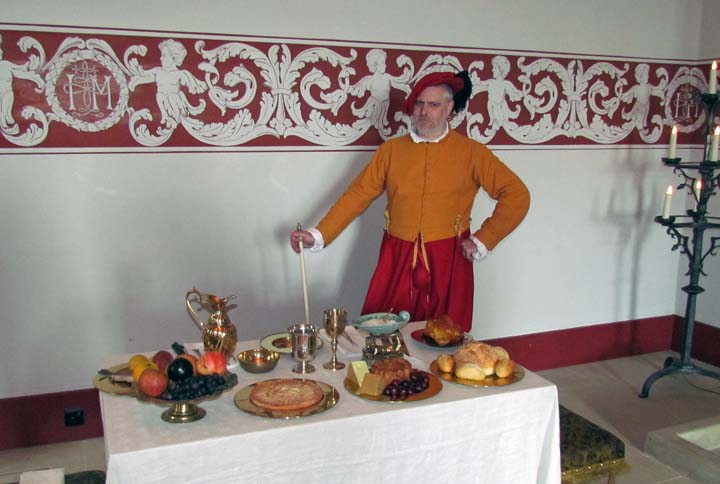 A typical meal for the Queen
A typical meal for the Queen
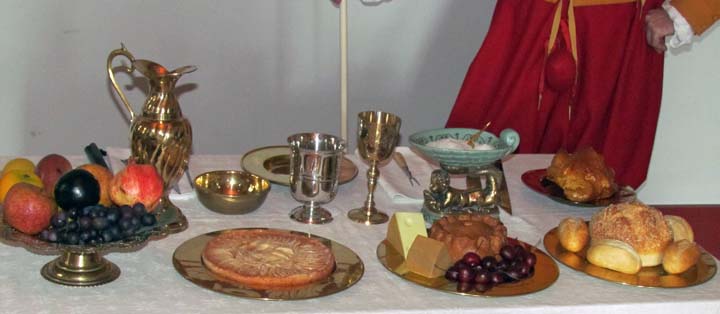
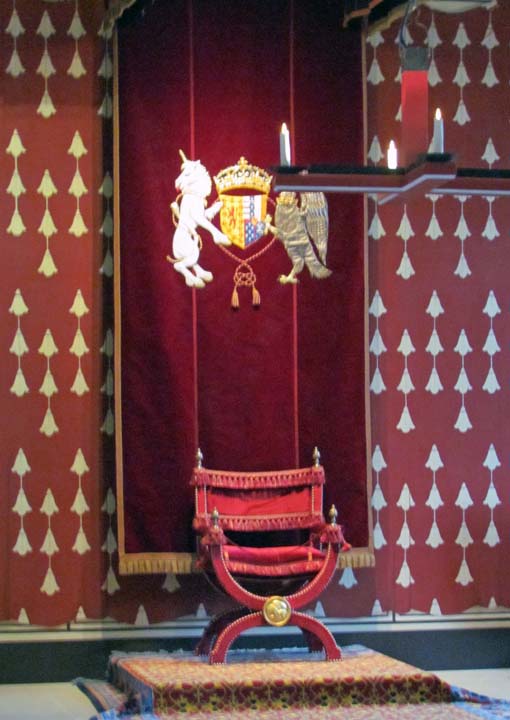
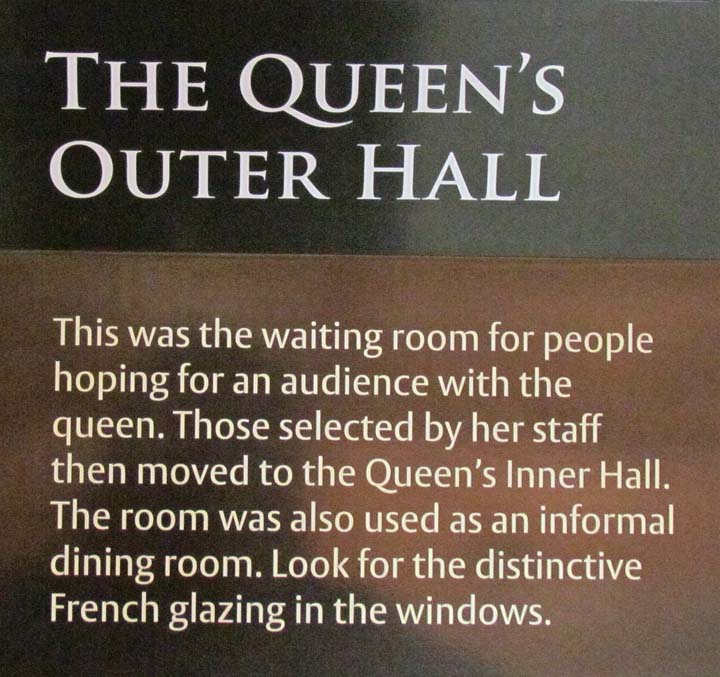
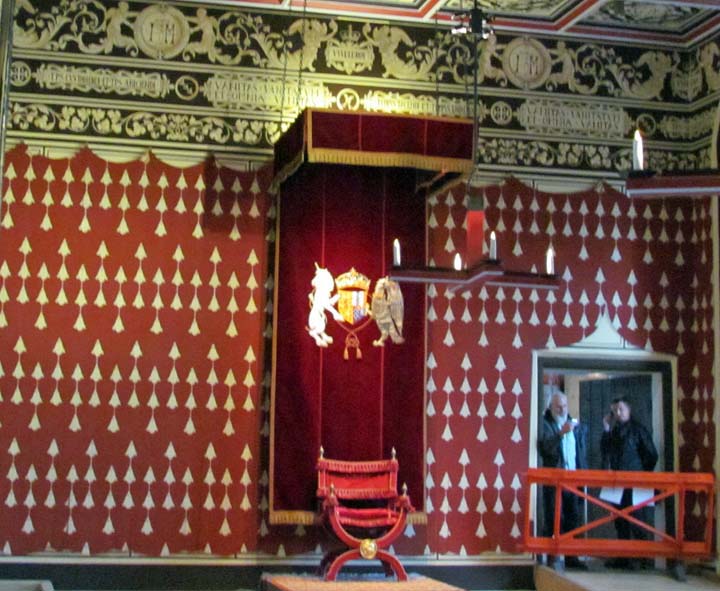
These fireplaces provided little heat
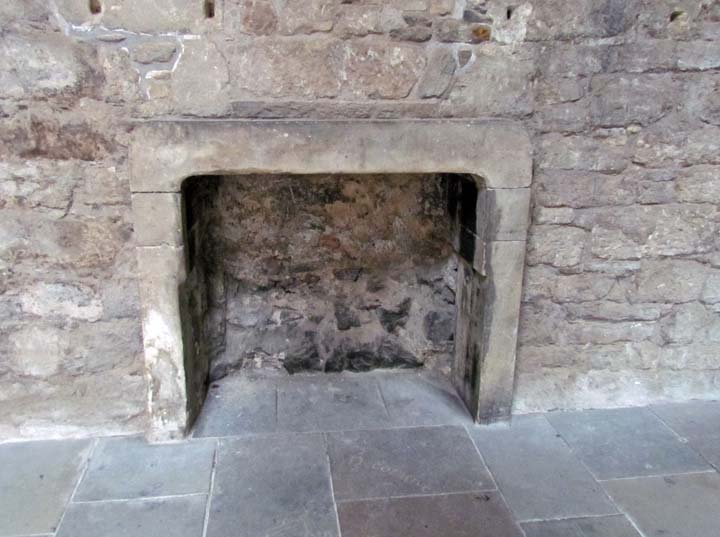
The outside of the Grand Hall - The entire castle was actually painted this golden color when the castle was in use.
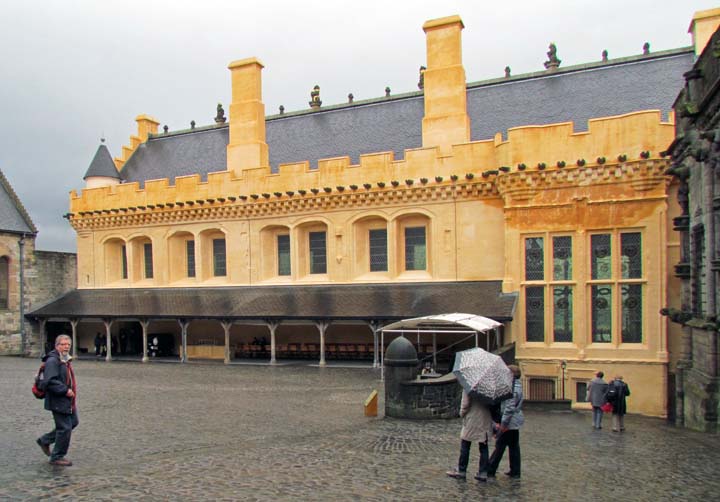
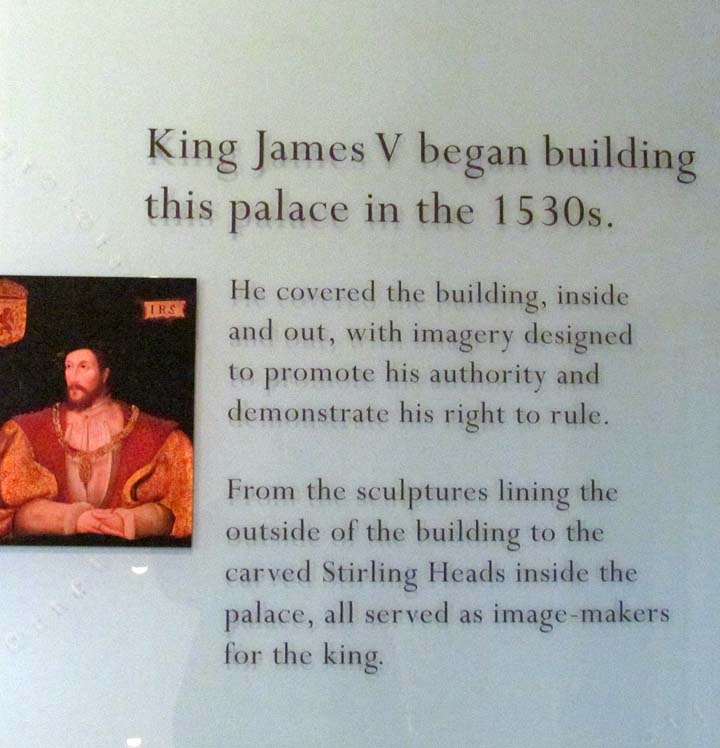
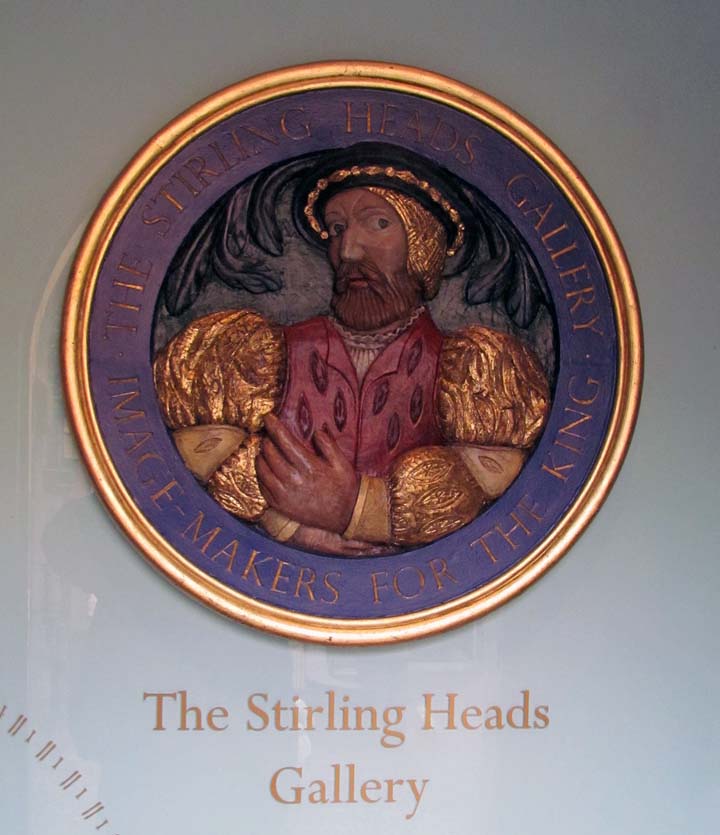
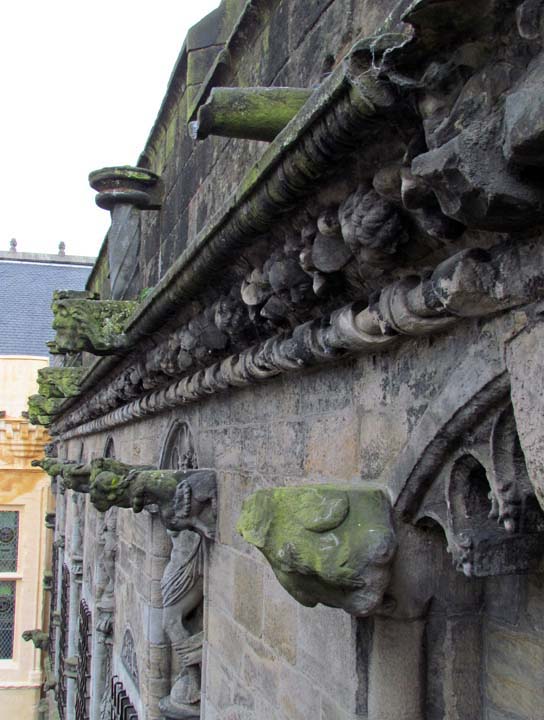
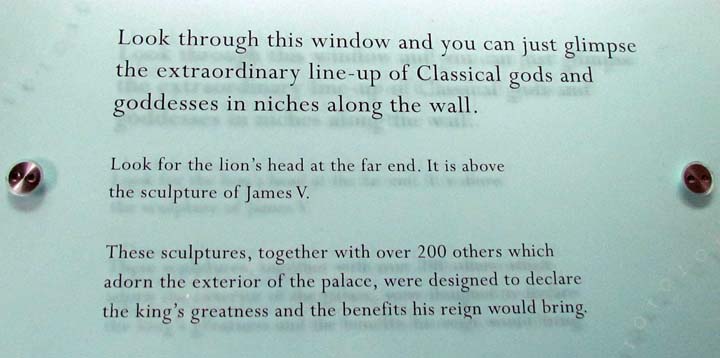
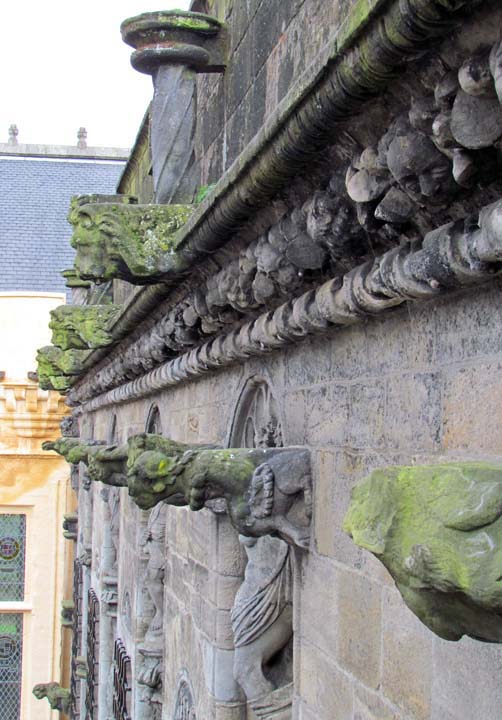
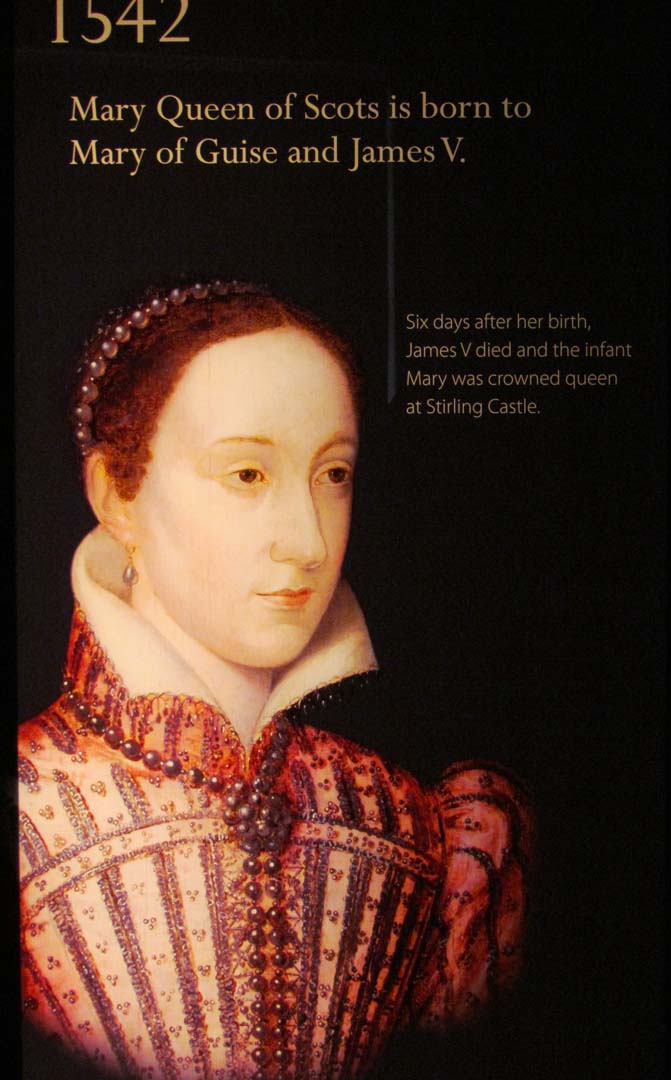
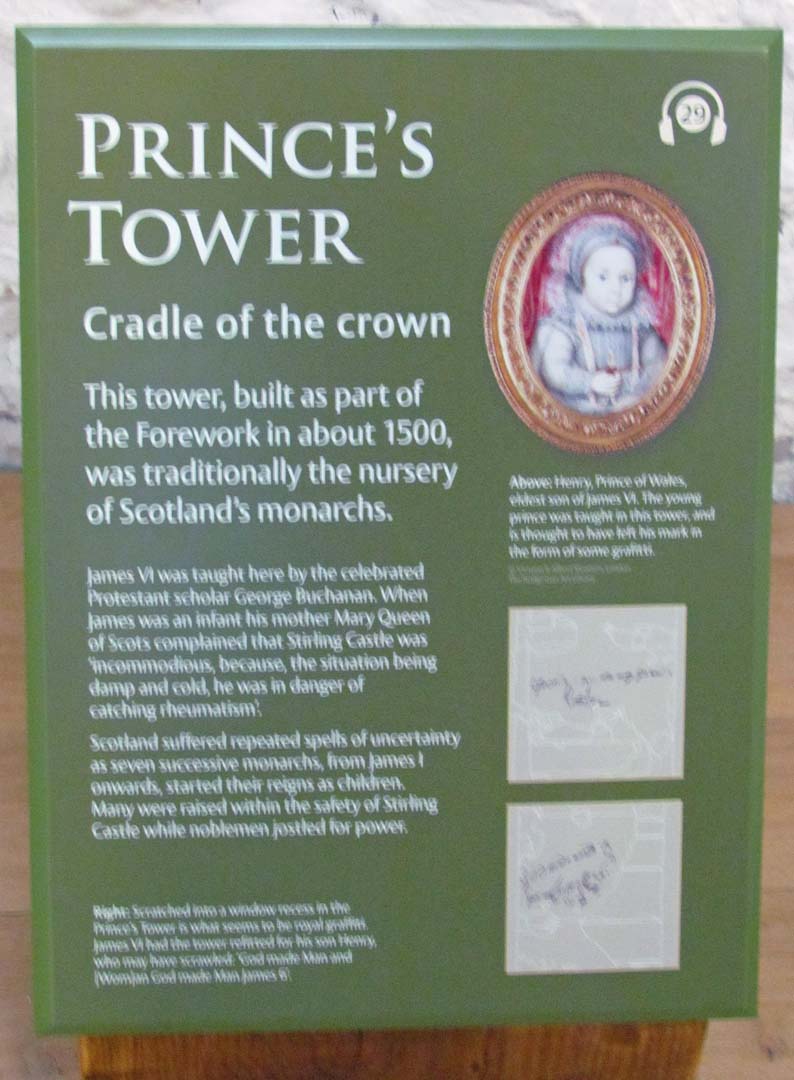
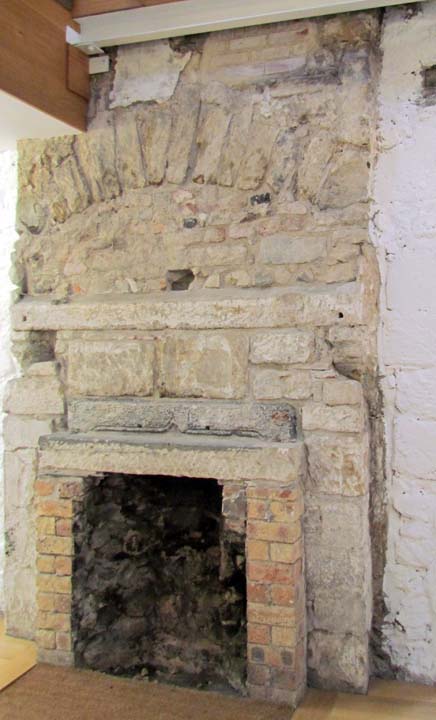
Not much of a fire for a baby to be Queen
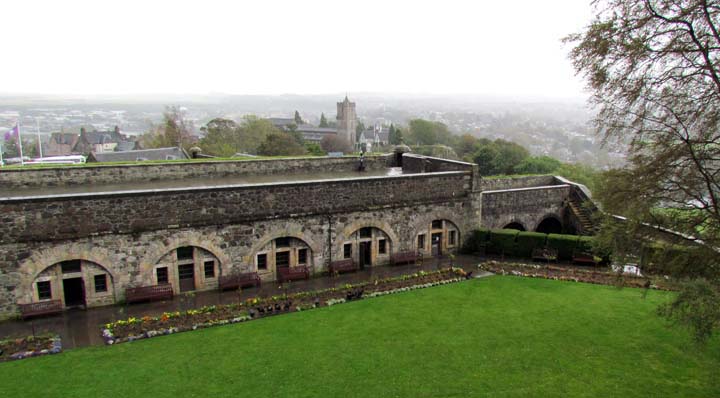 Views
from the tower
Views
from the tower
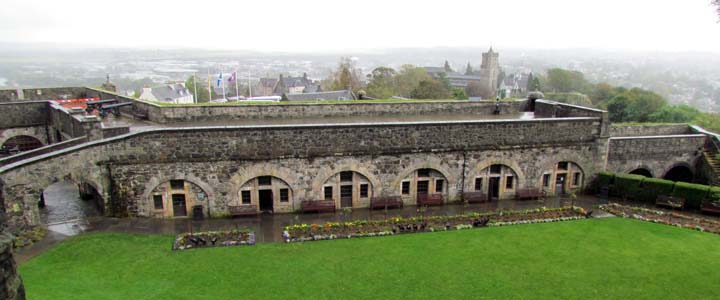
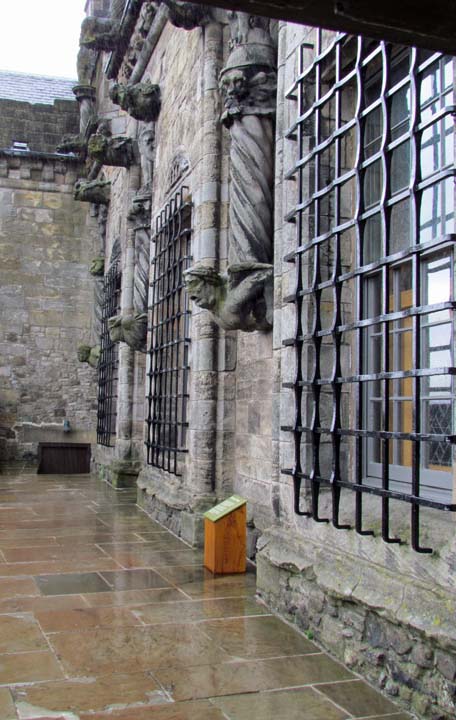
A hallway filled with side-rooms with interactive displays for both kids and adults
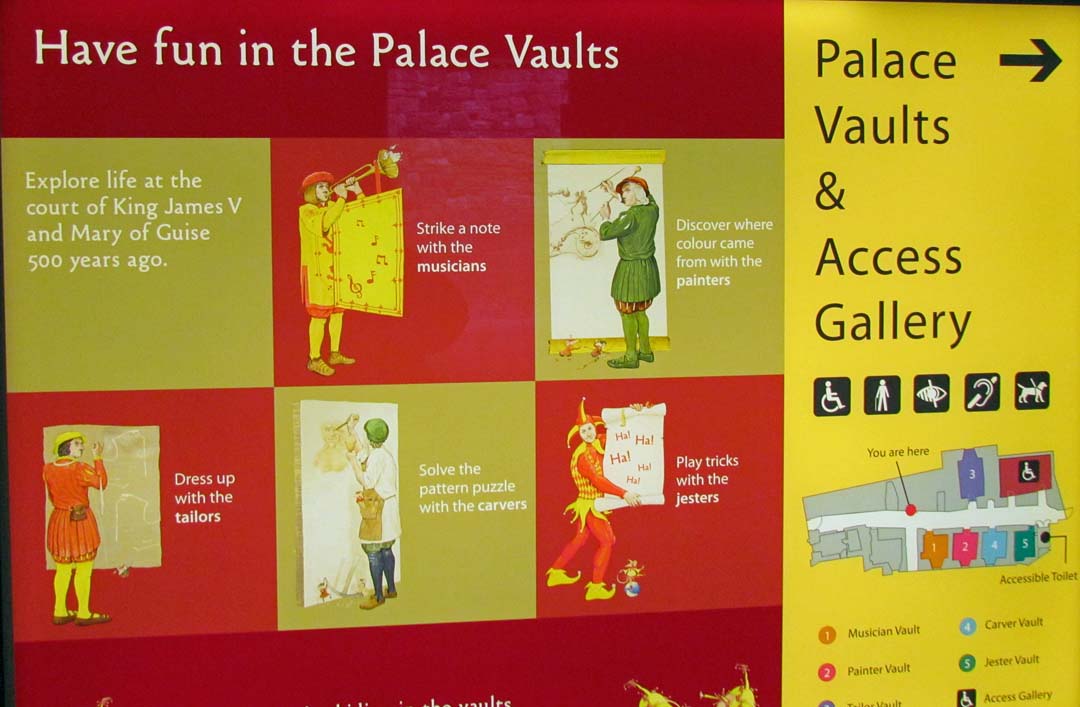
Oops, also had a dungeon
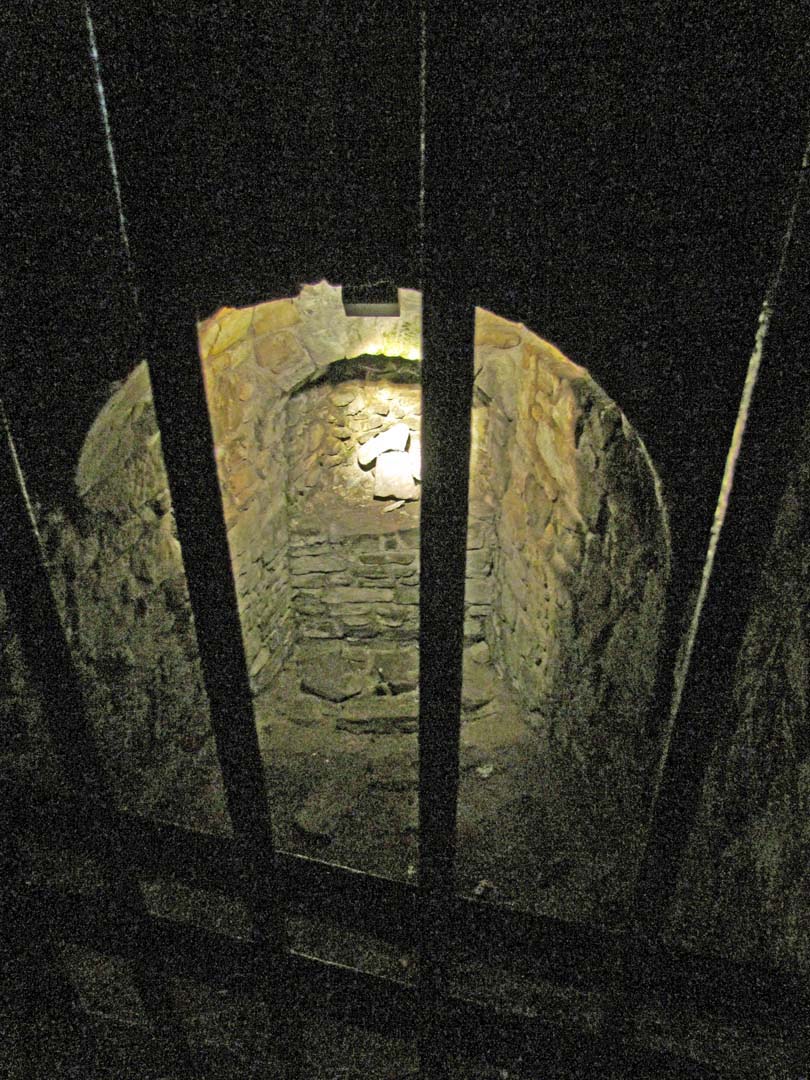
It had models of the King and Queen for examples of their clothing
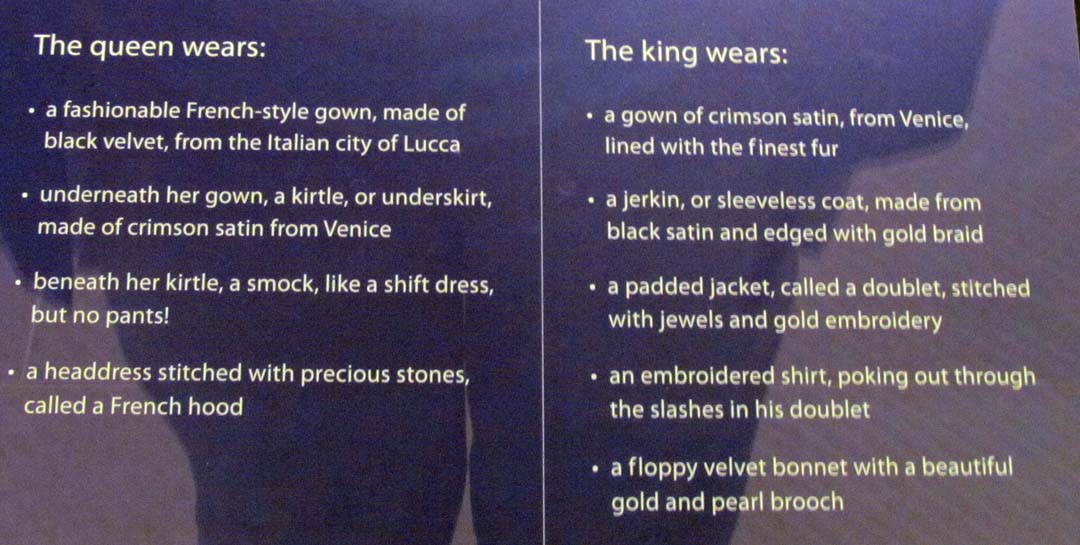
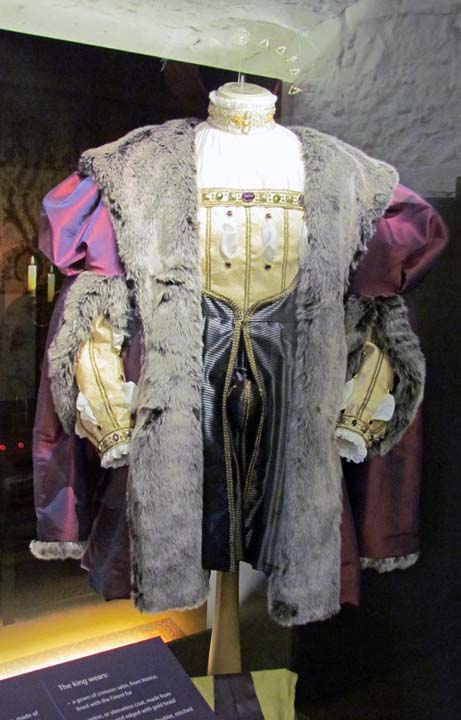
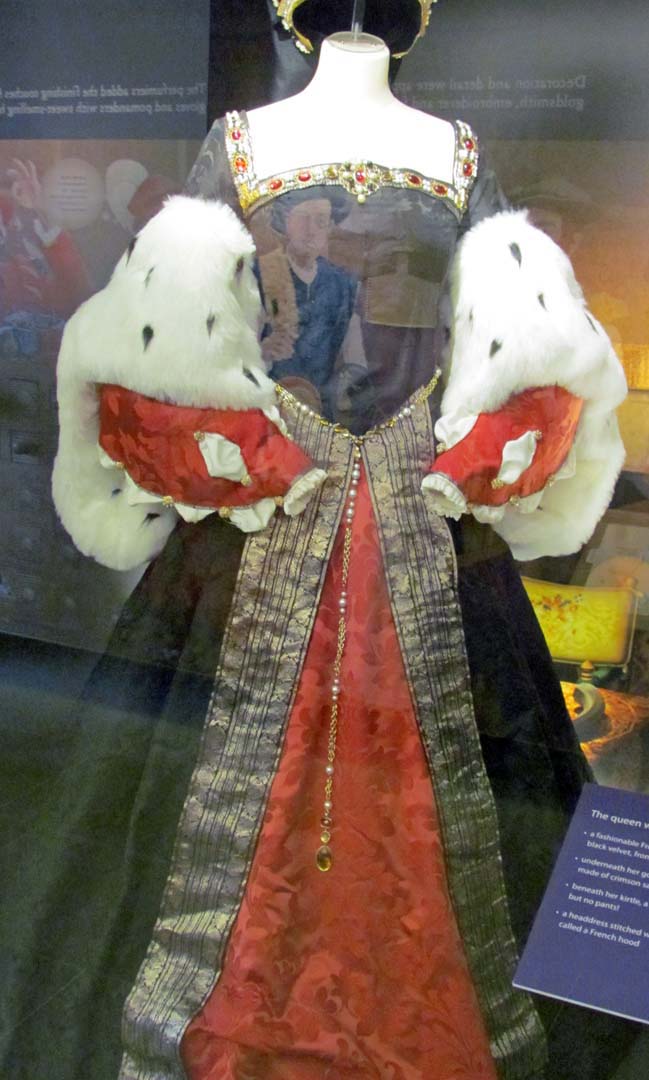
An exhibit where one could attempt to carve a Stirling Face
The wood was hard a rock - I do not understand how they did such delicate cuts.
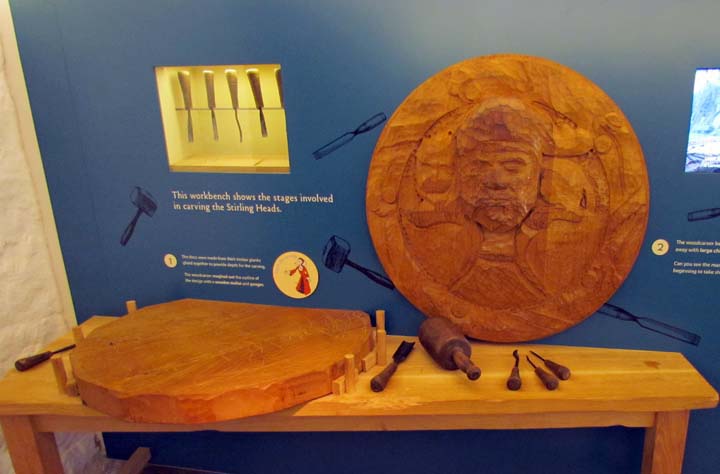
This mouse was carved on a leg of the work bench above
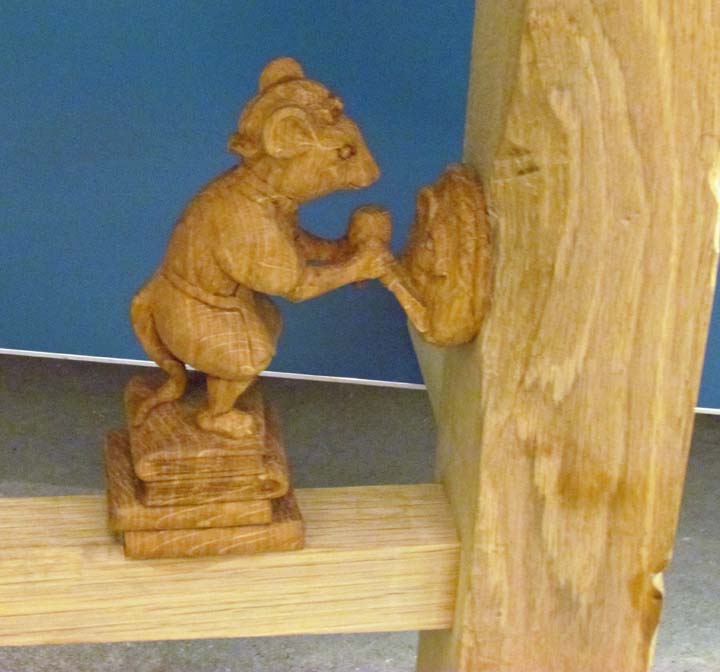
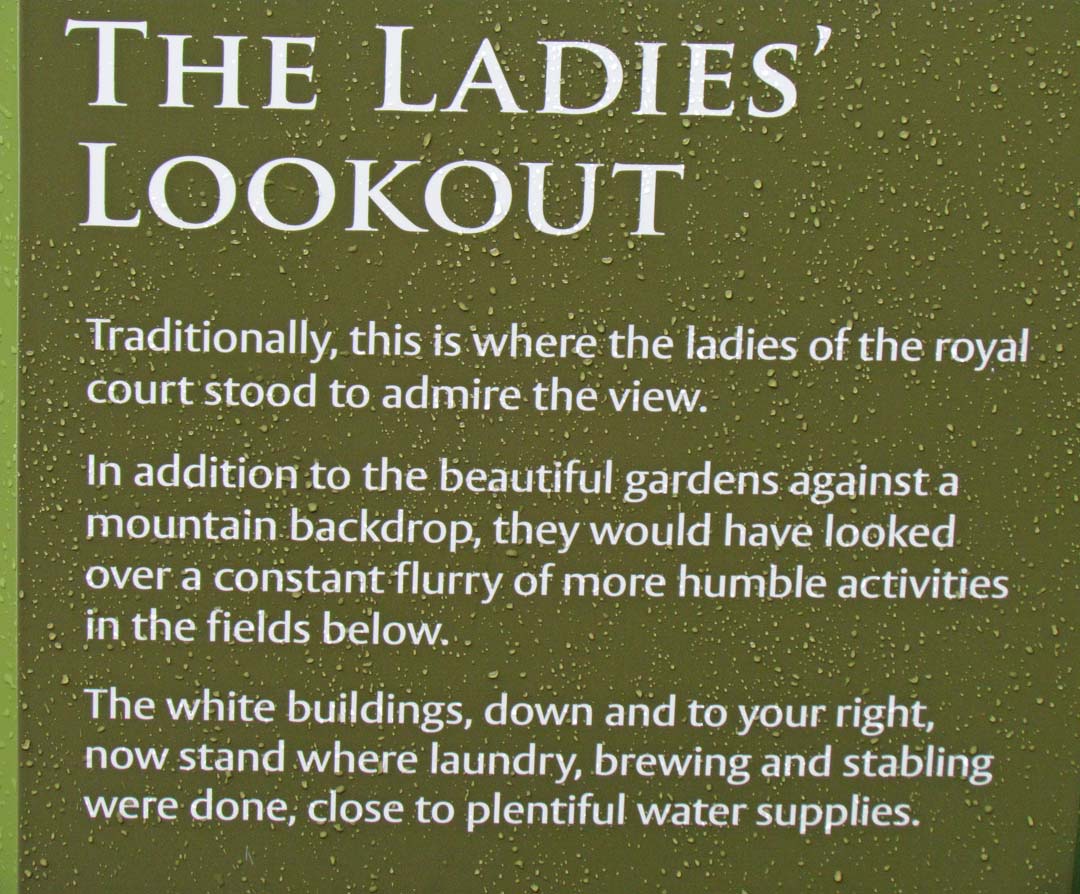
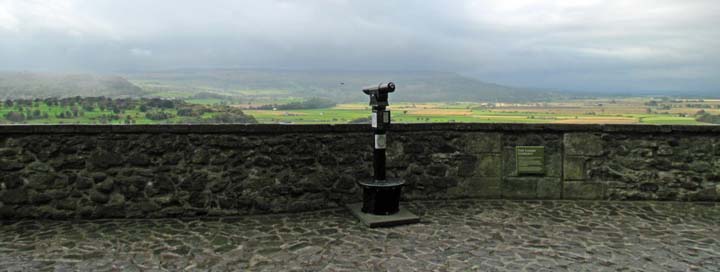
The King's Knot, as seen from the Lady's Lookout
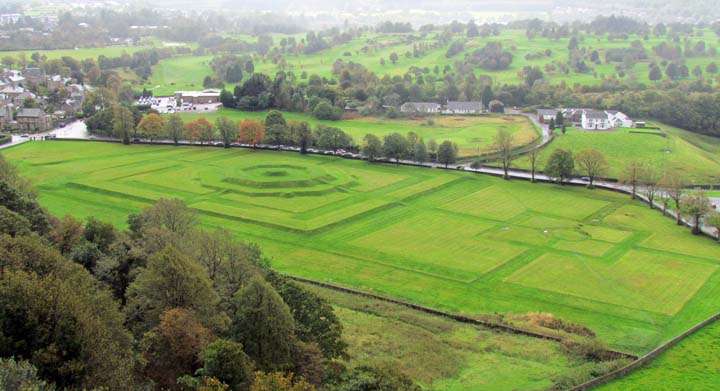
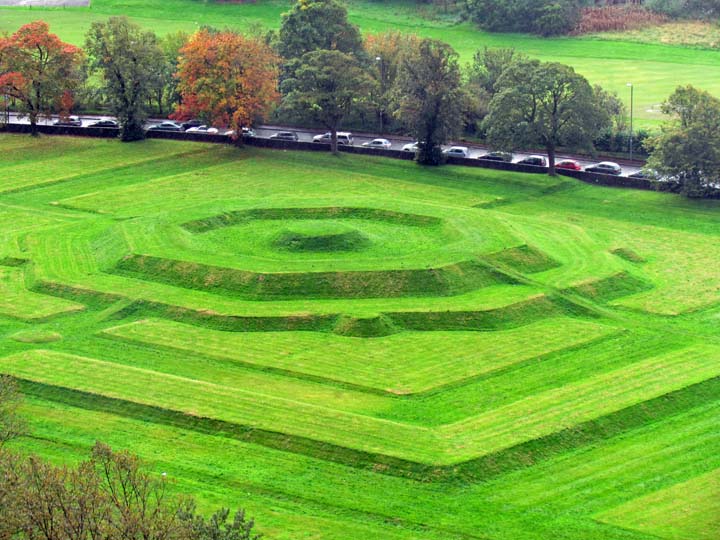
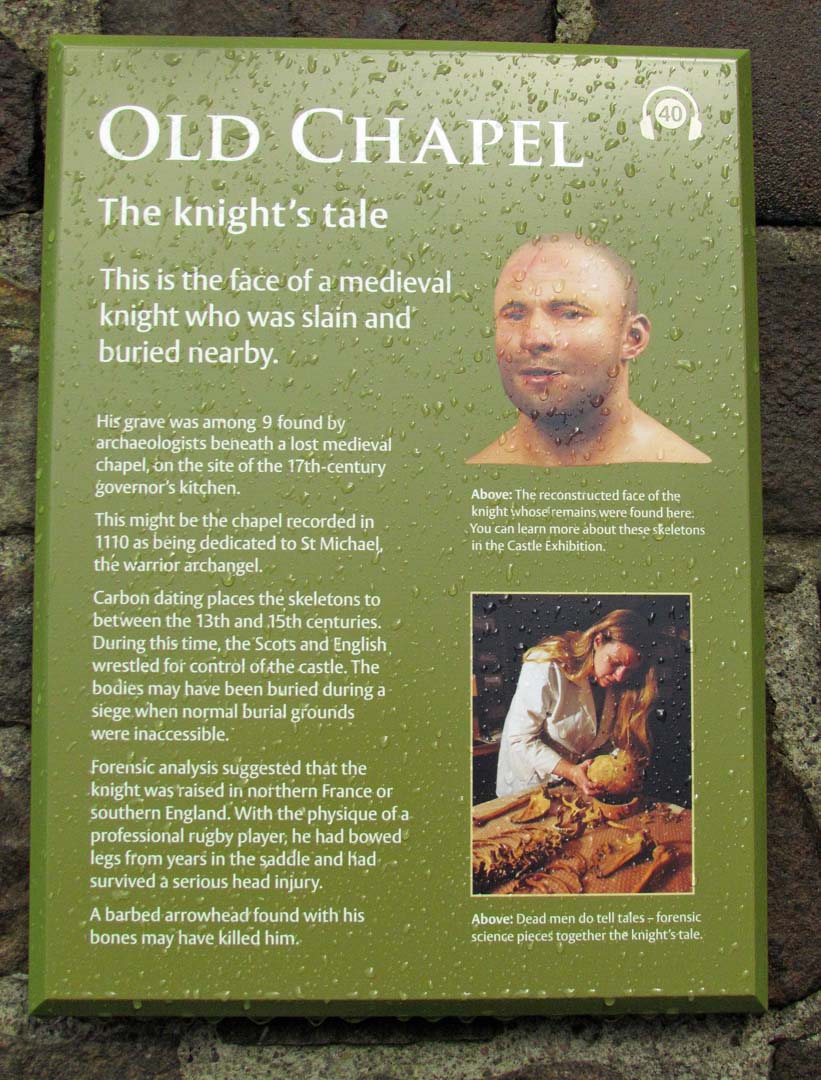
Where the Knight was found
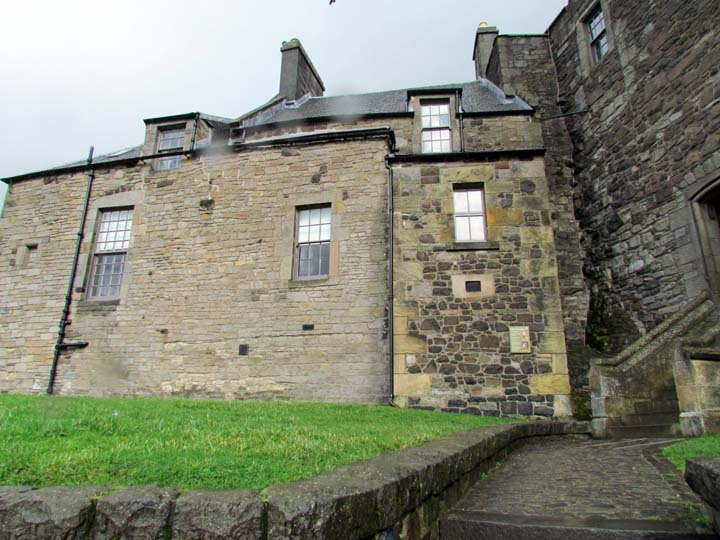
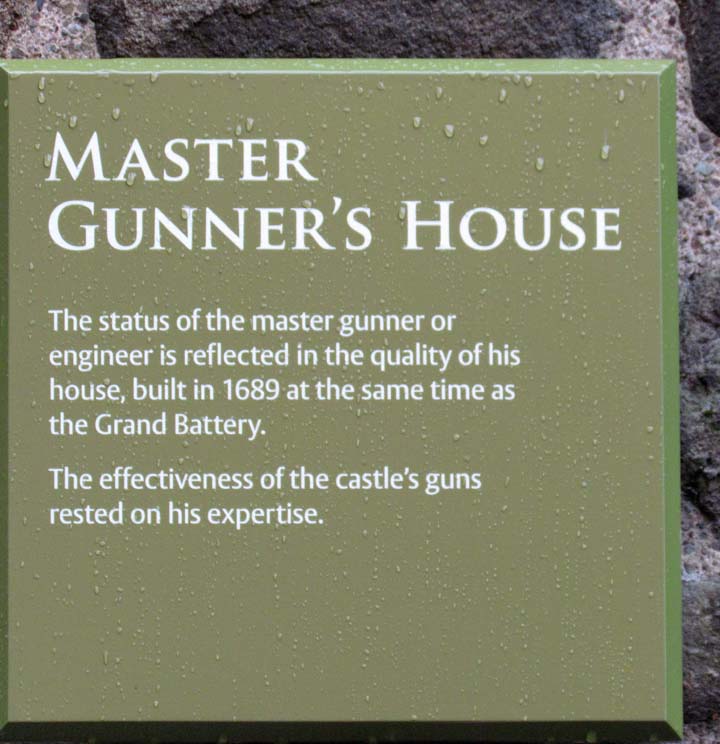
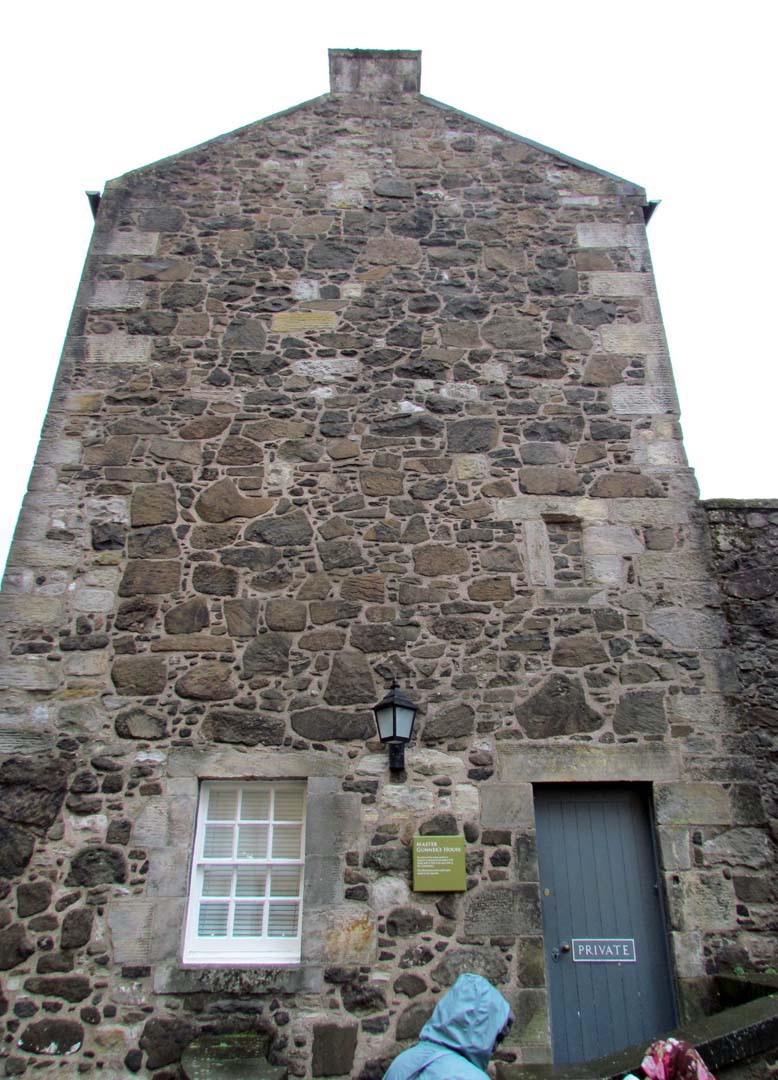
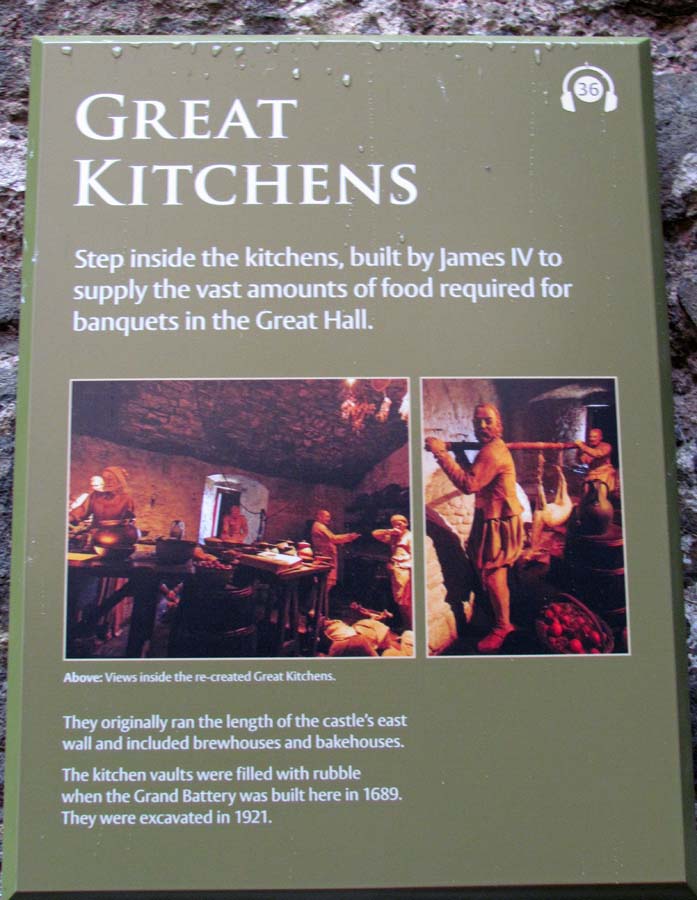
OK, I spent too much time taking pictures of the kitchen. I was fascinated because everything was life-size. Further, there were about five pre-teens, without supervision, literally running around within the exhibits in the kitchen I took many pictures in a effort to not include them in the shots.
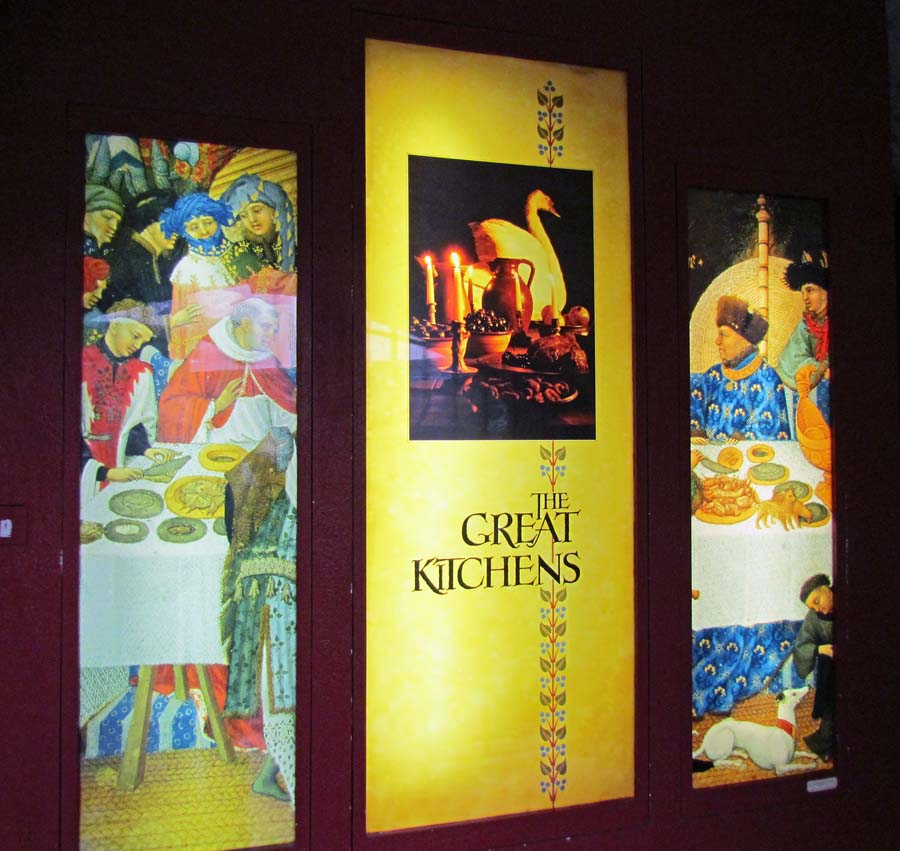
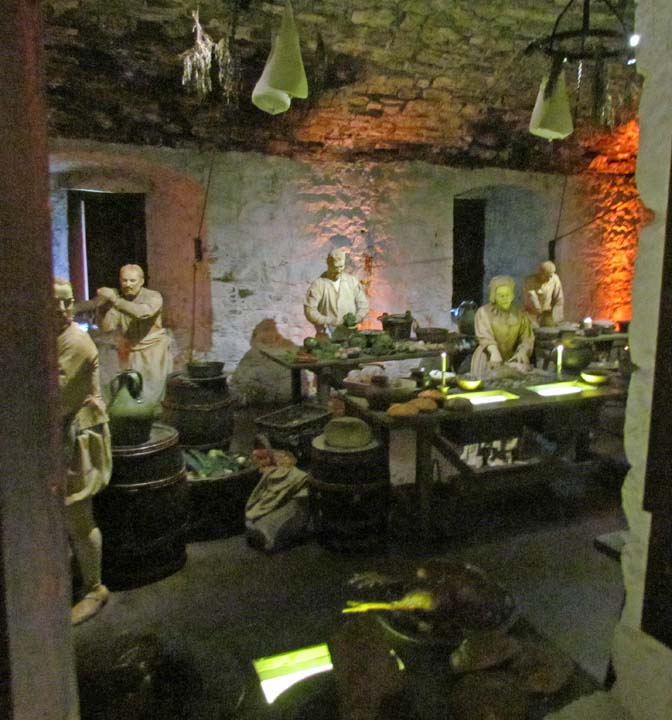
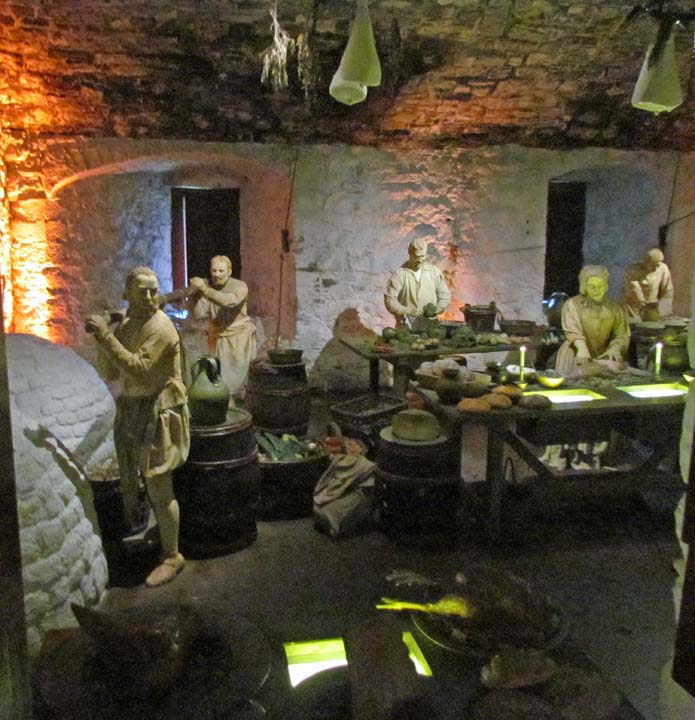
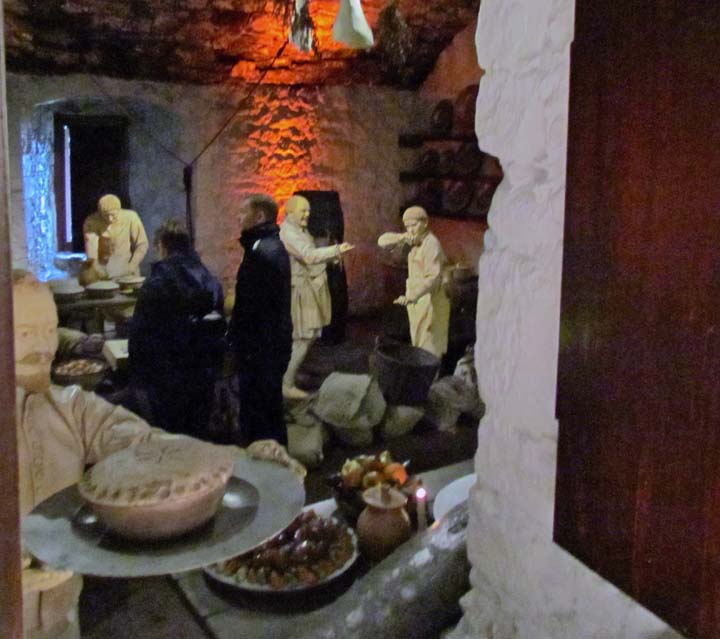
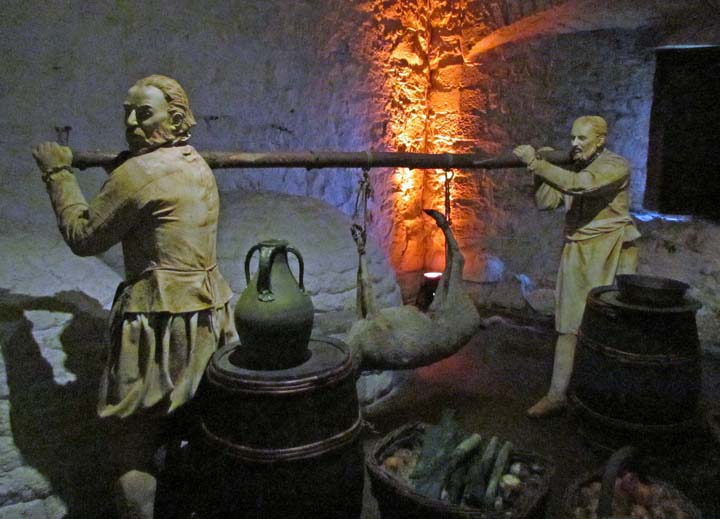
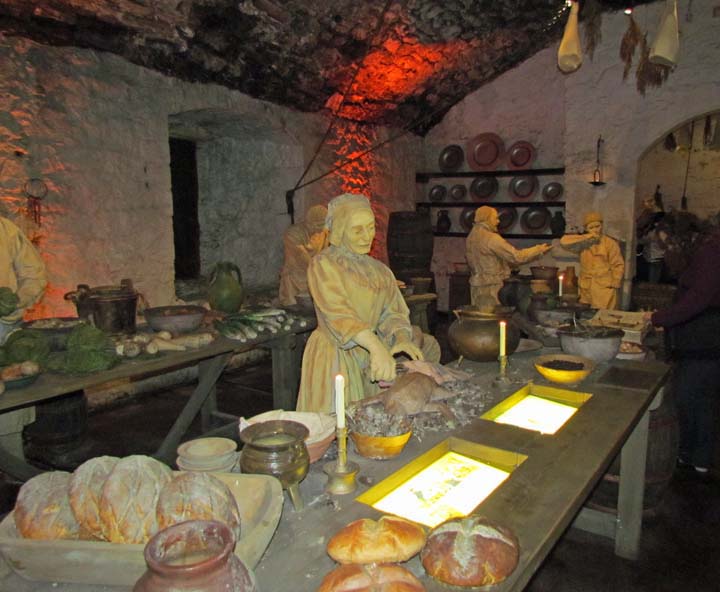
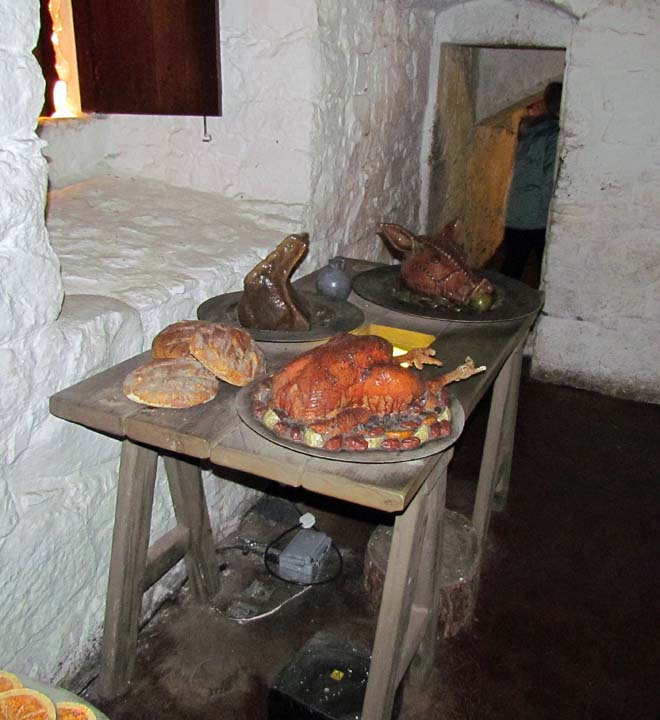
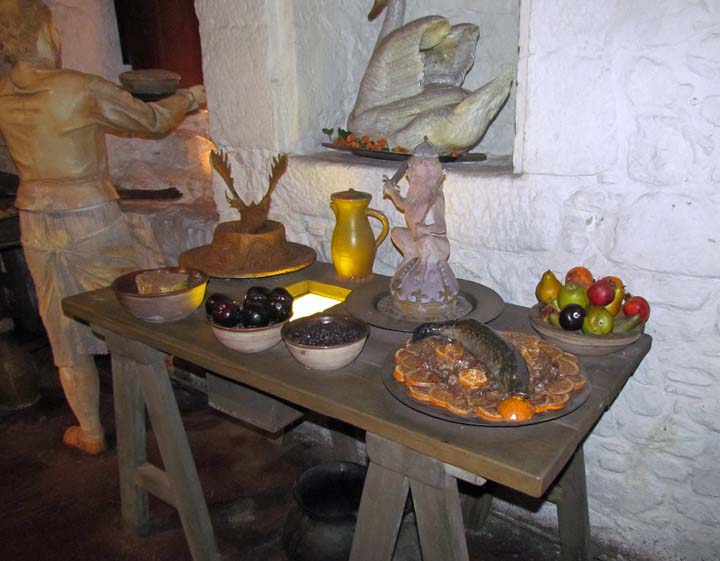
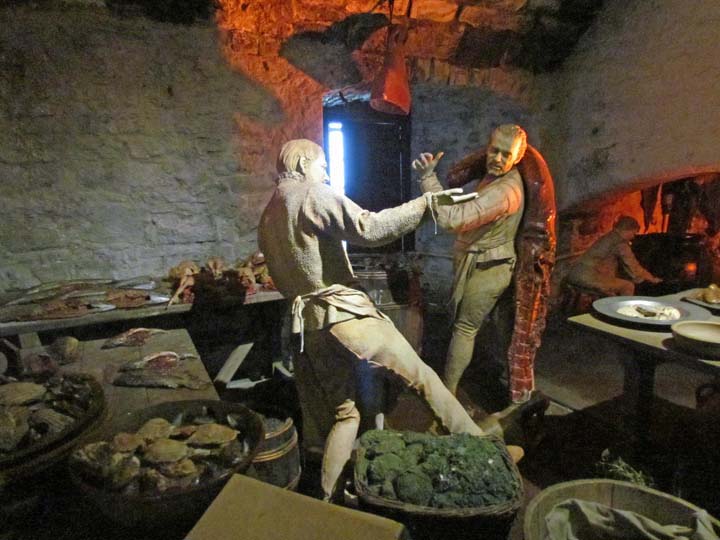
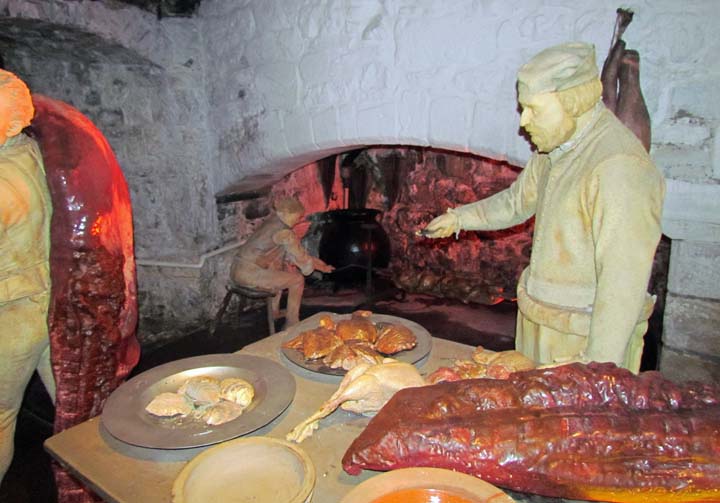
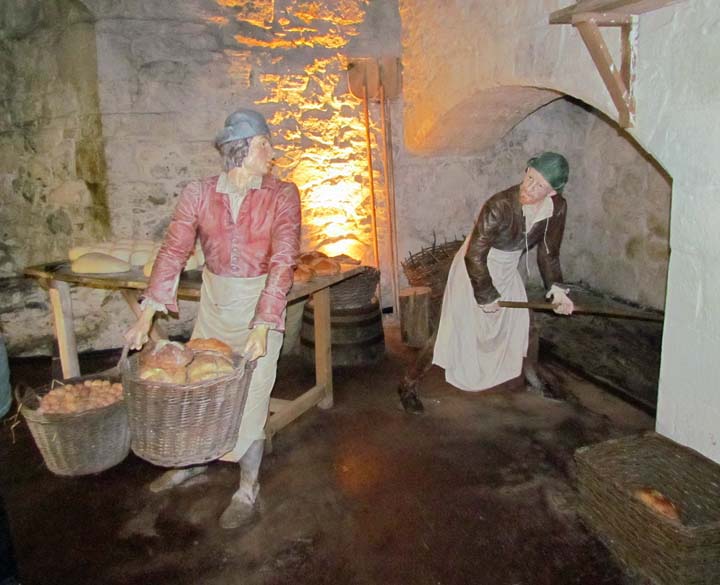
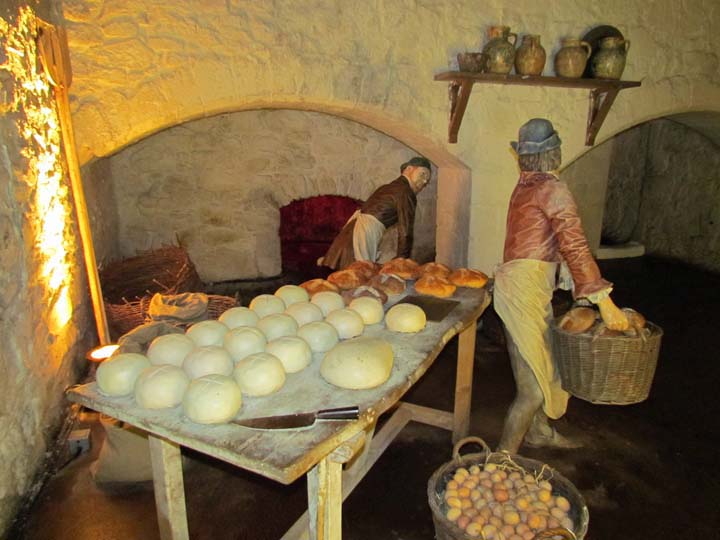
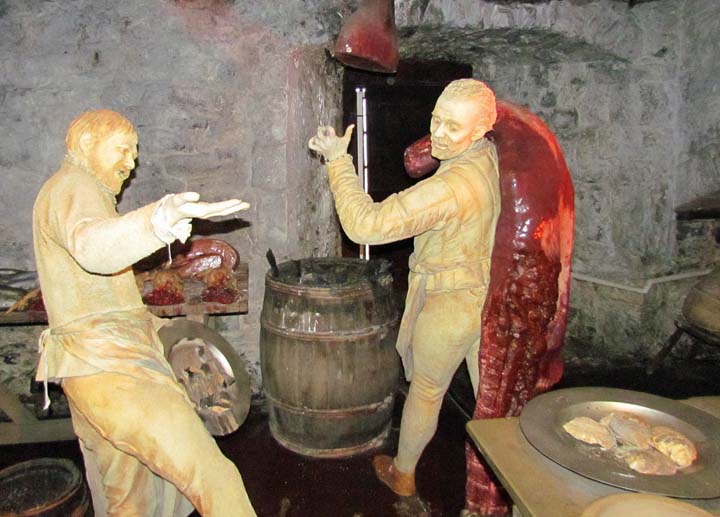
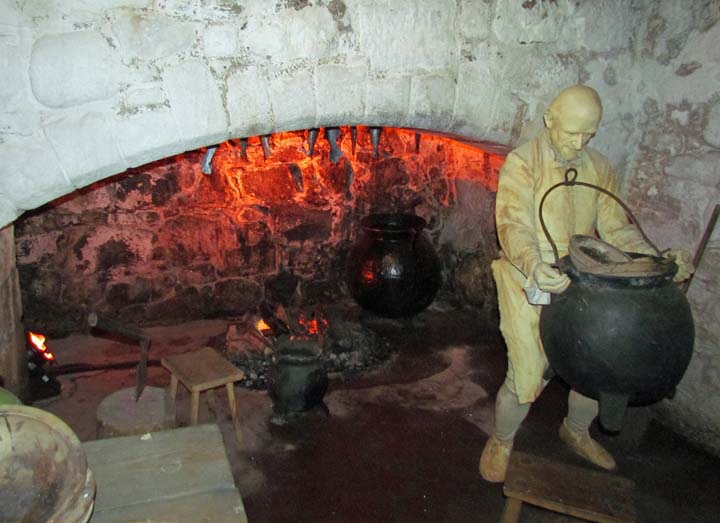
After a full afternoon, we leave through the gates to the Stirling Castle
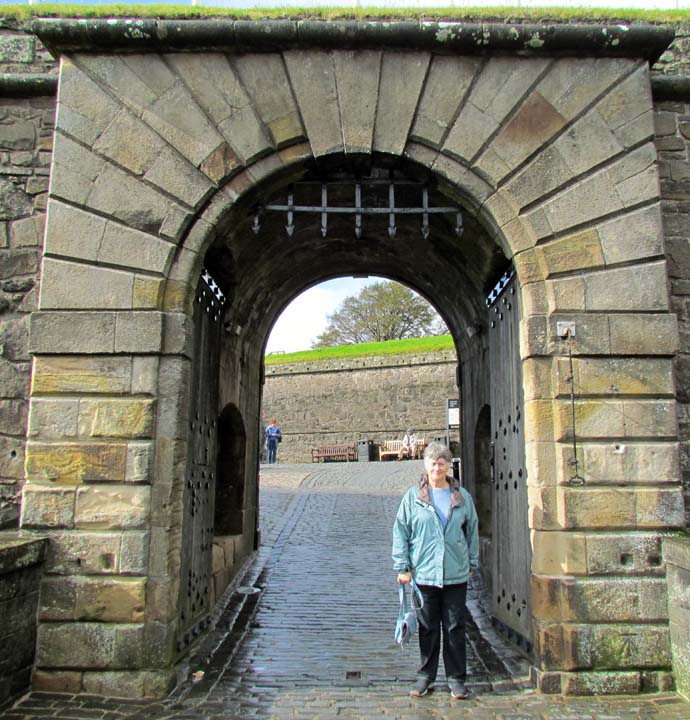
Beyond the gate, along the parking area, are monuments to several heroes and battles.
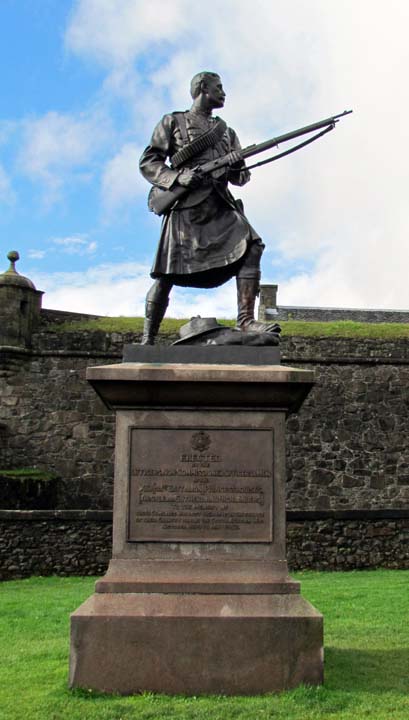
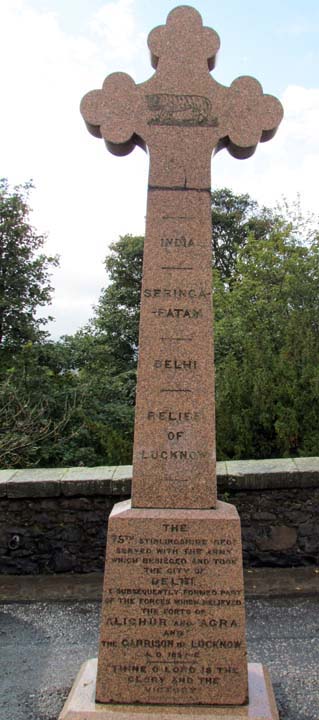
~ ~ ~ ~ ~ ~ ~ ~ ~ ~ ~ ~~ ~ ~ ~ ~ ~ ~ ~ ~ ~ ~ ~ ~ ~ ~ ~ ~